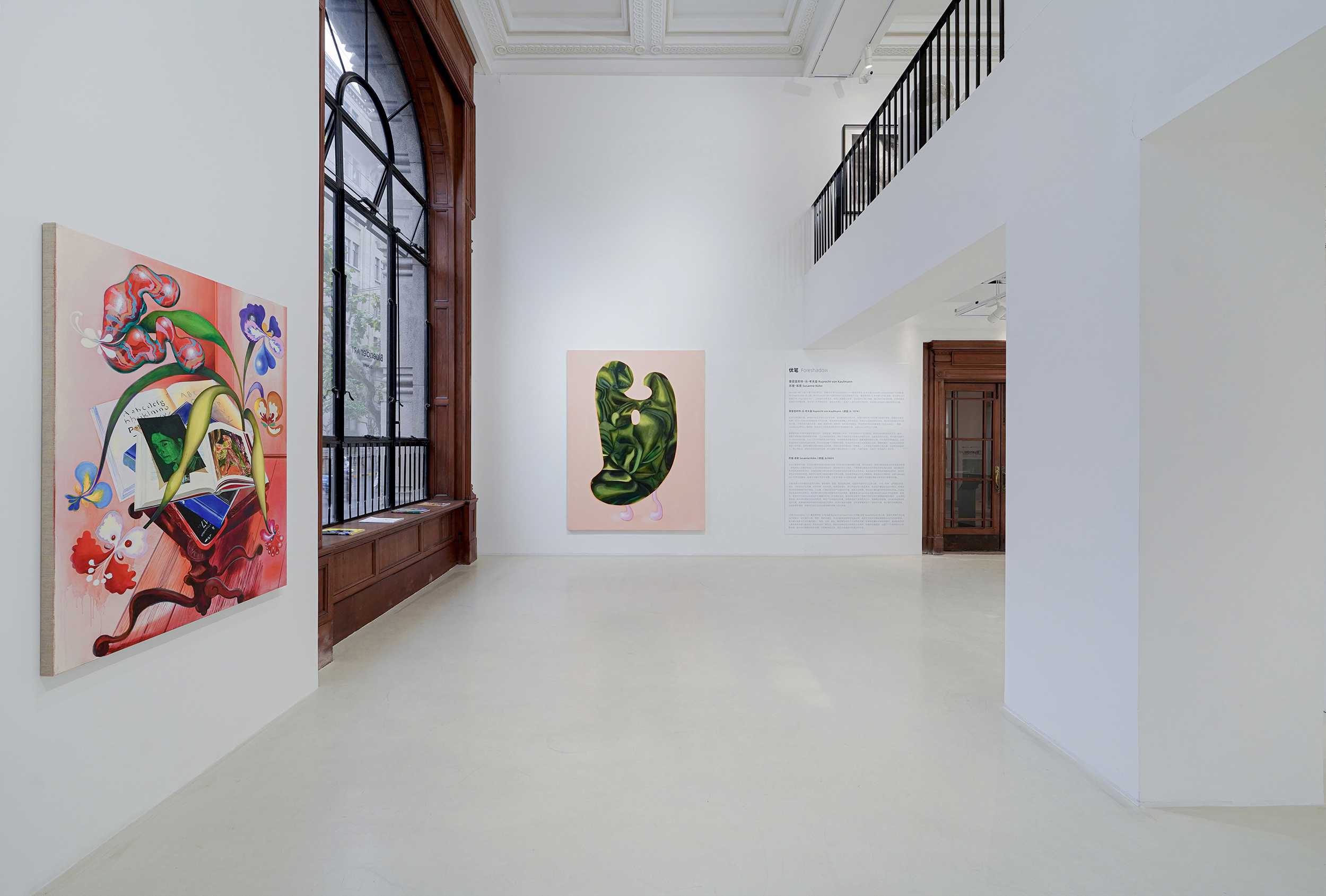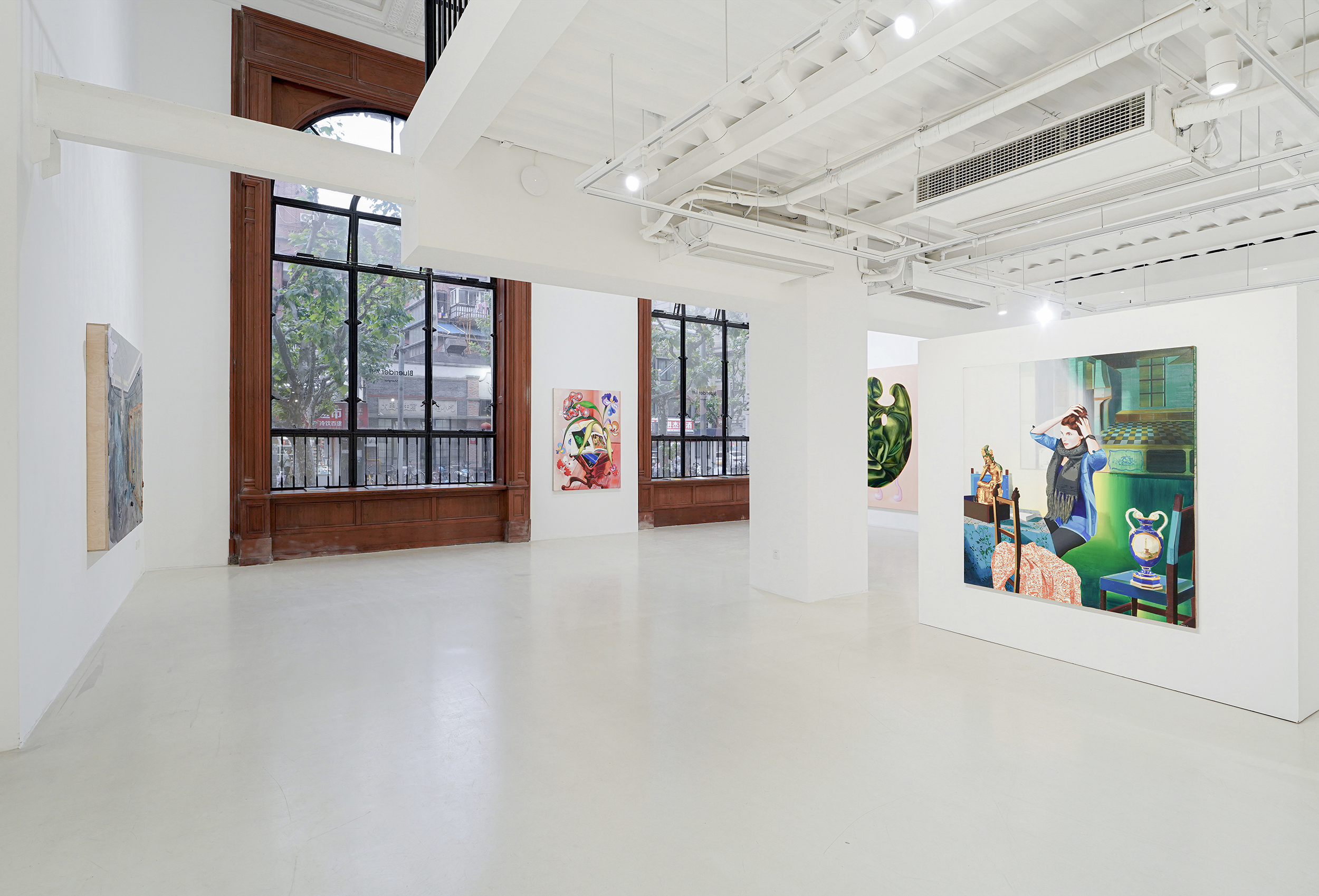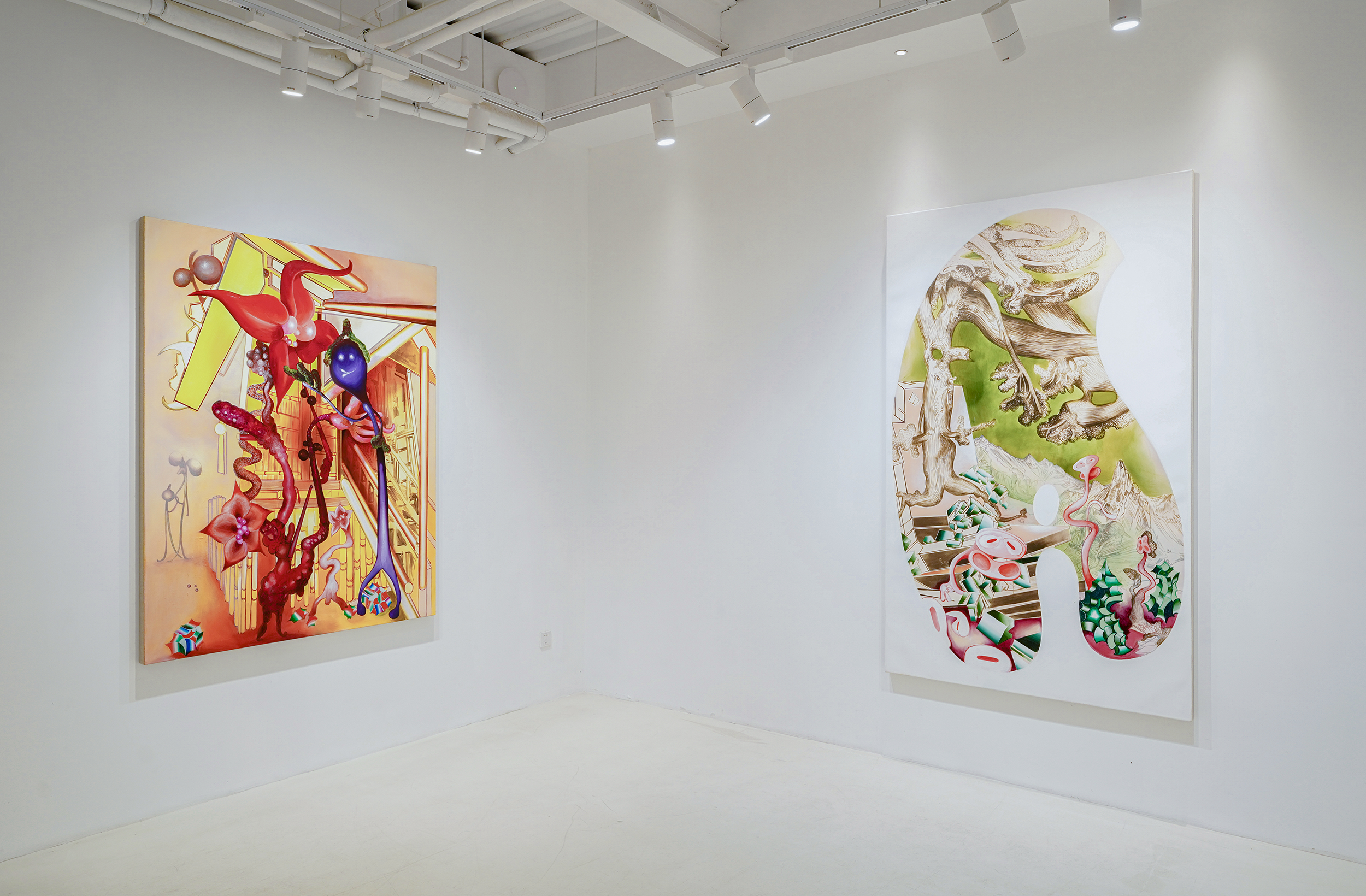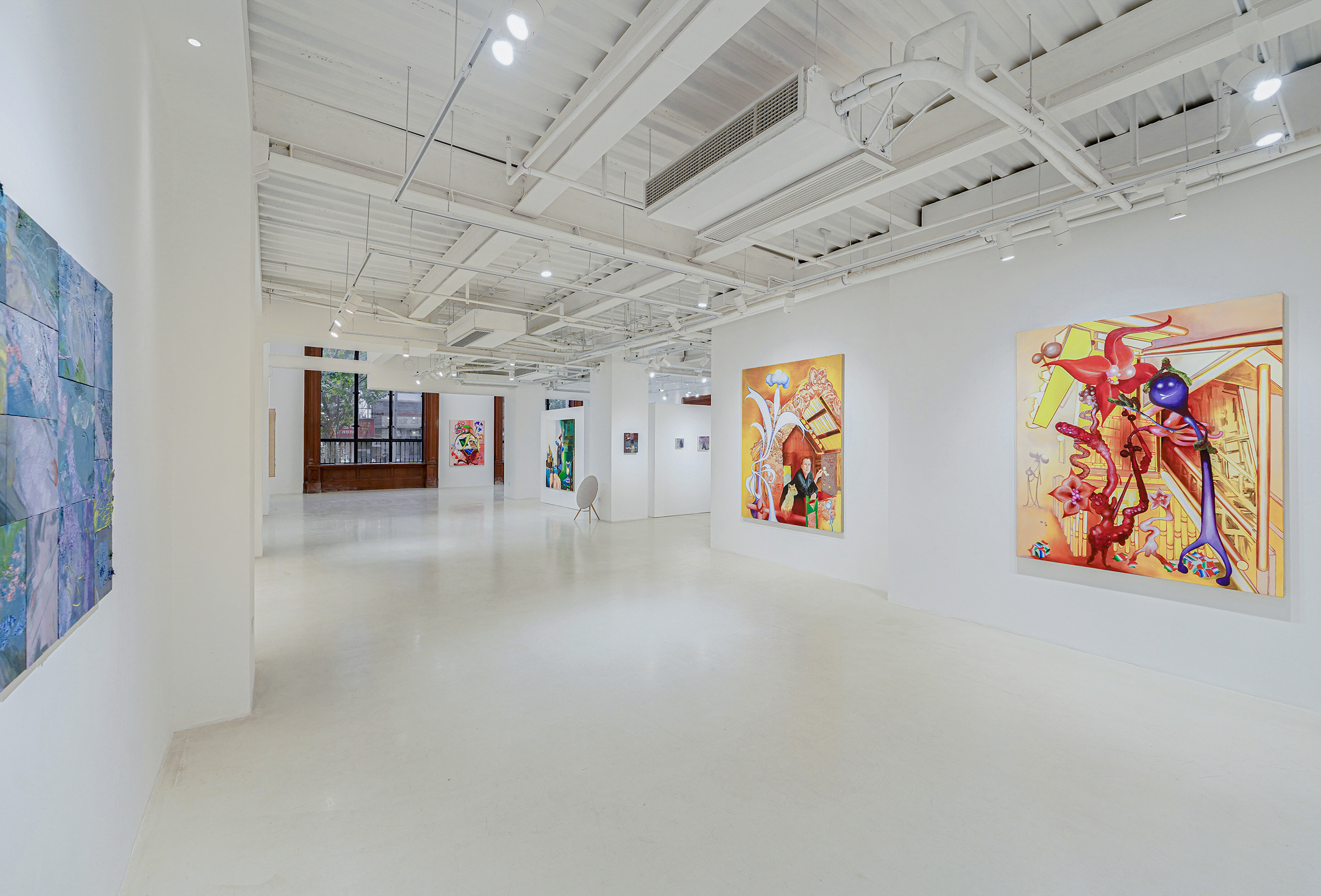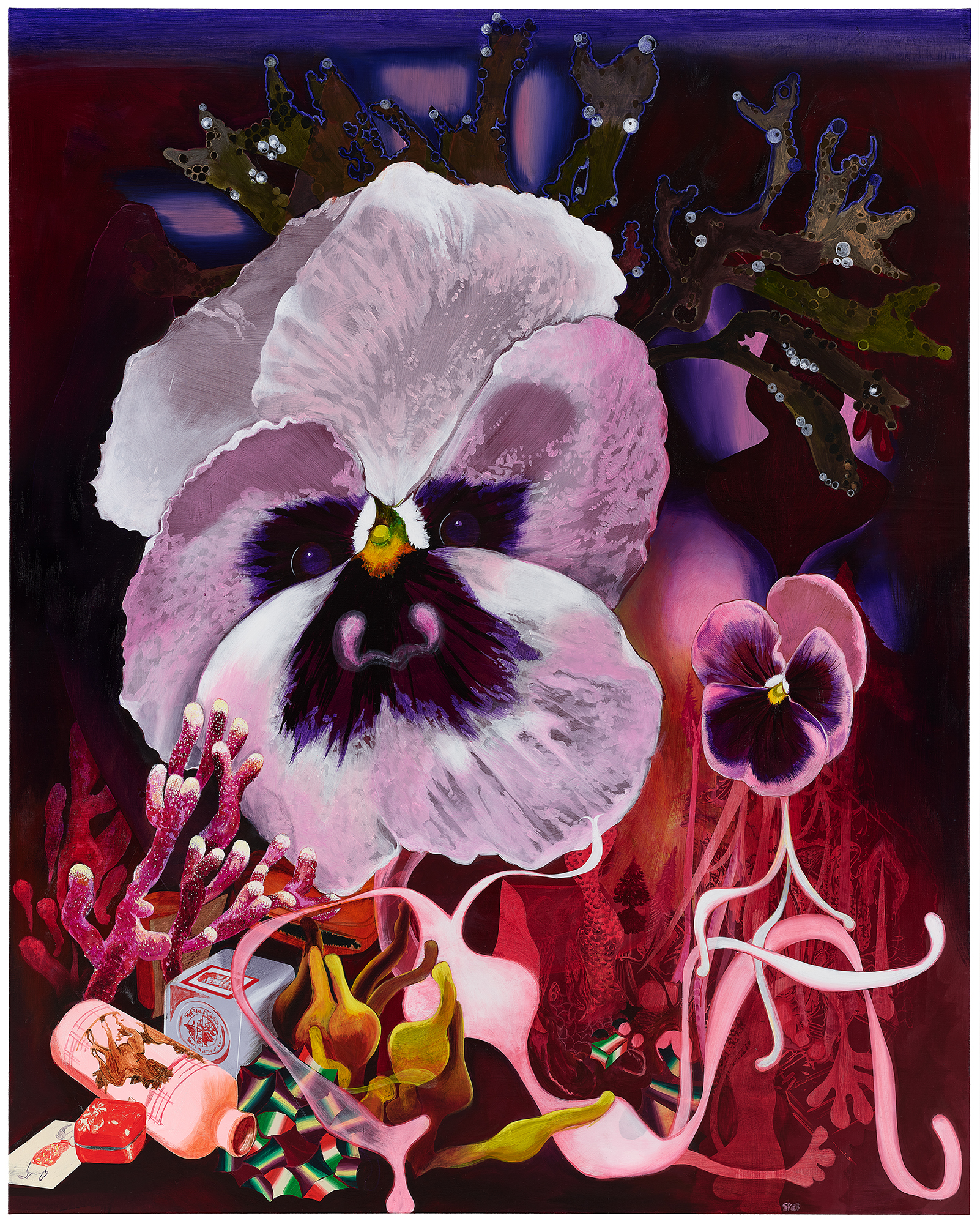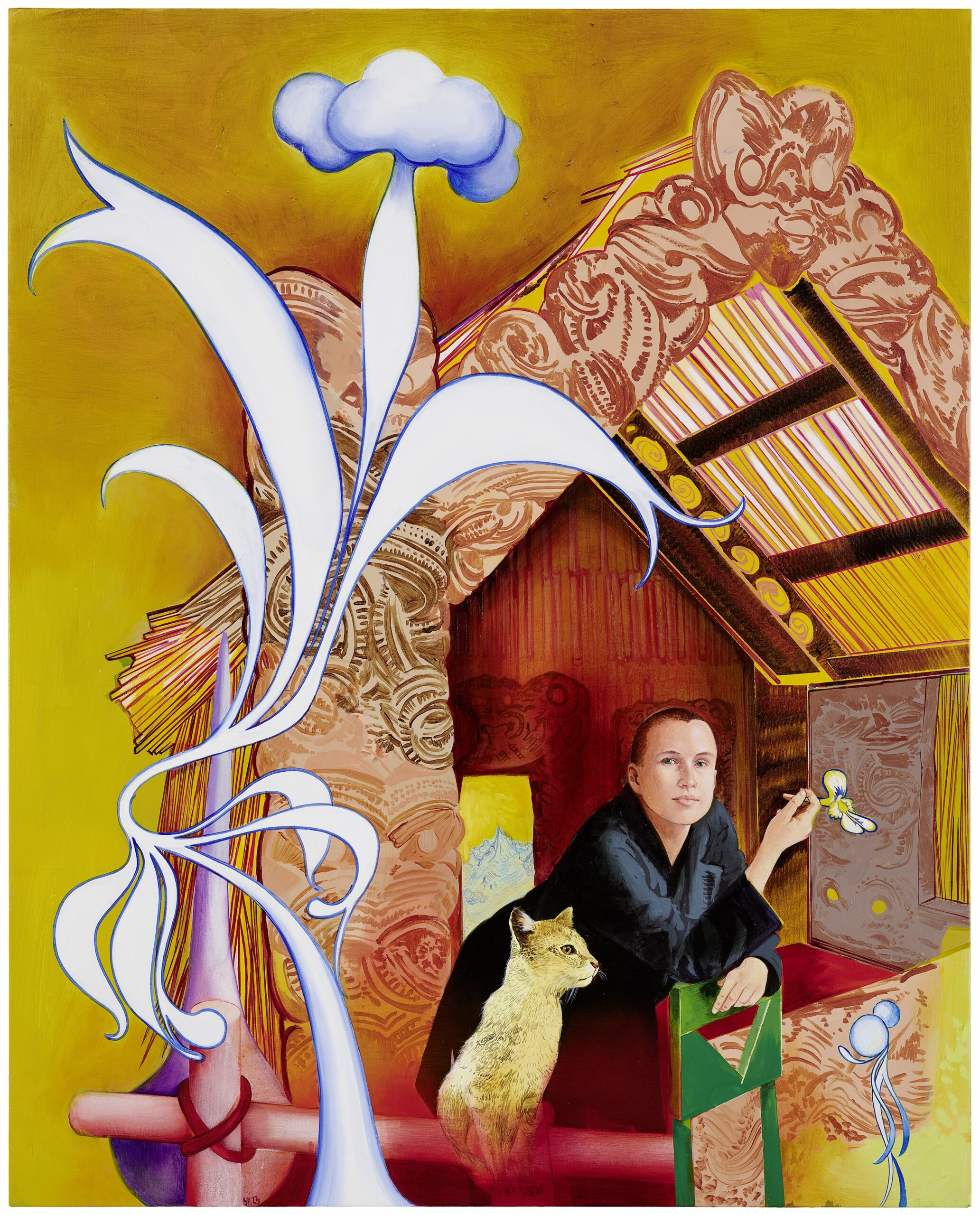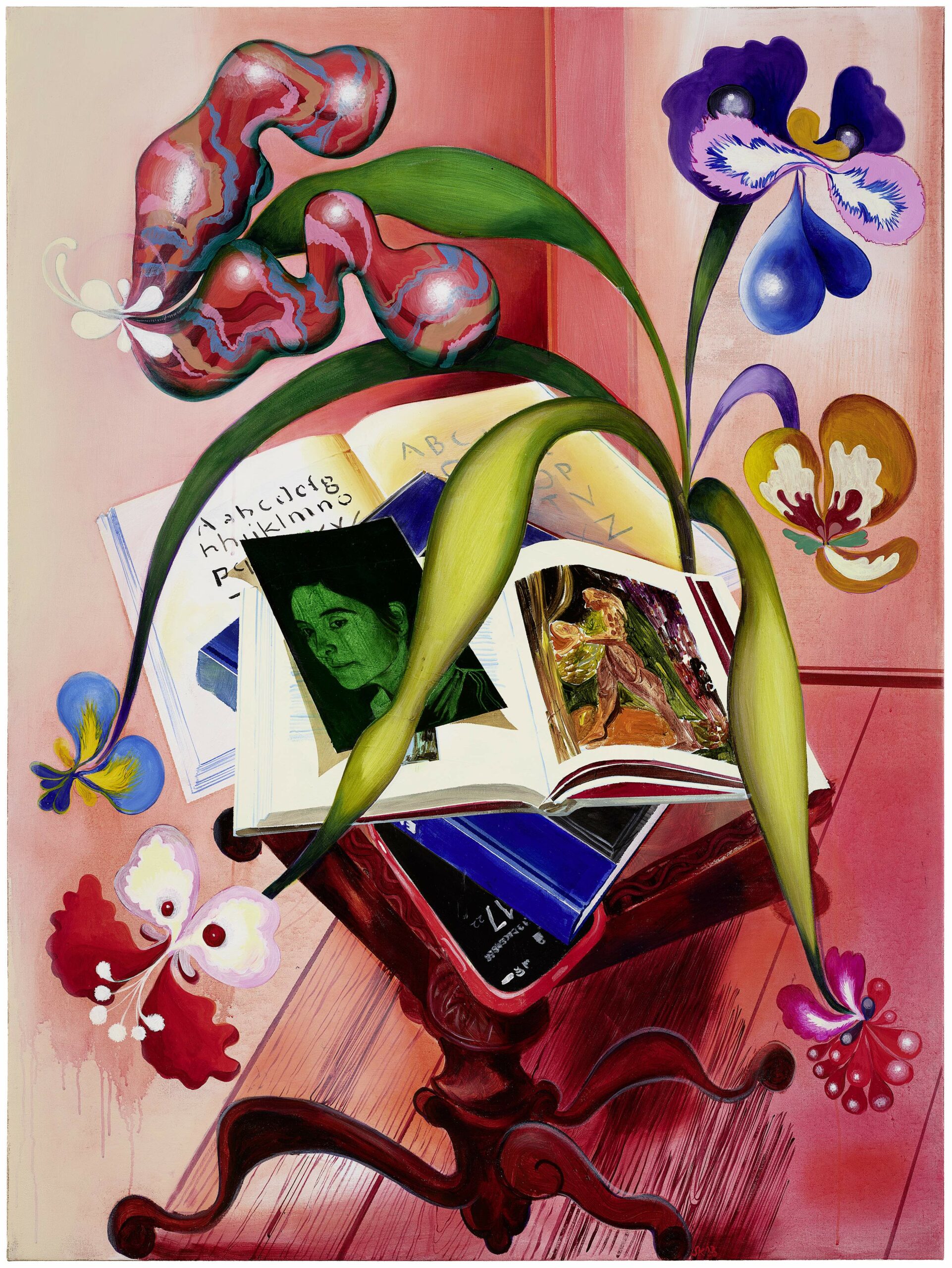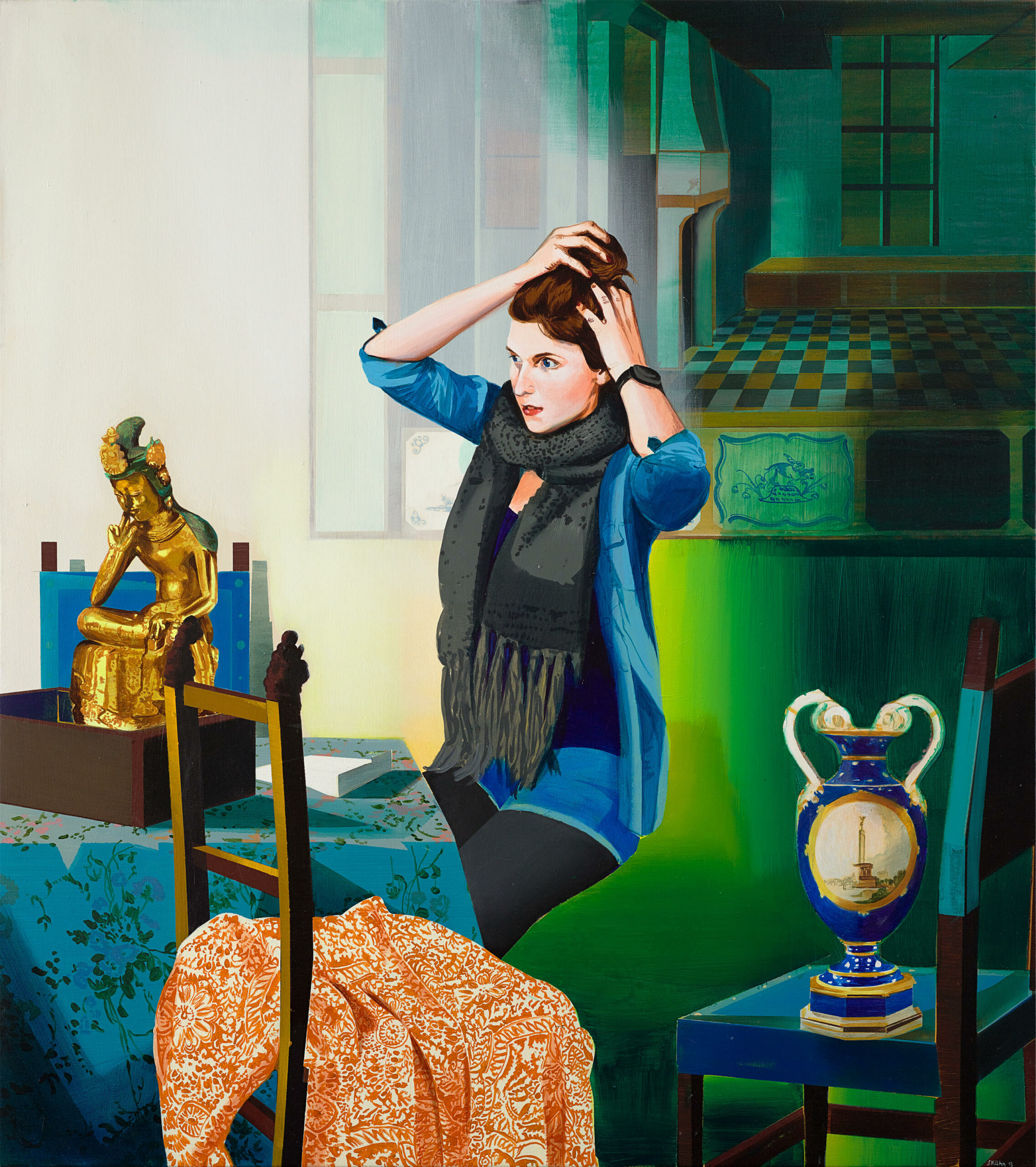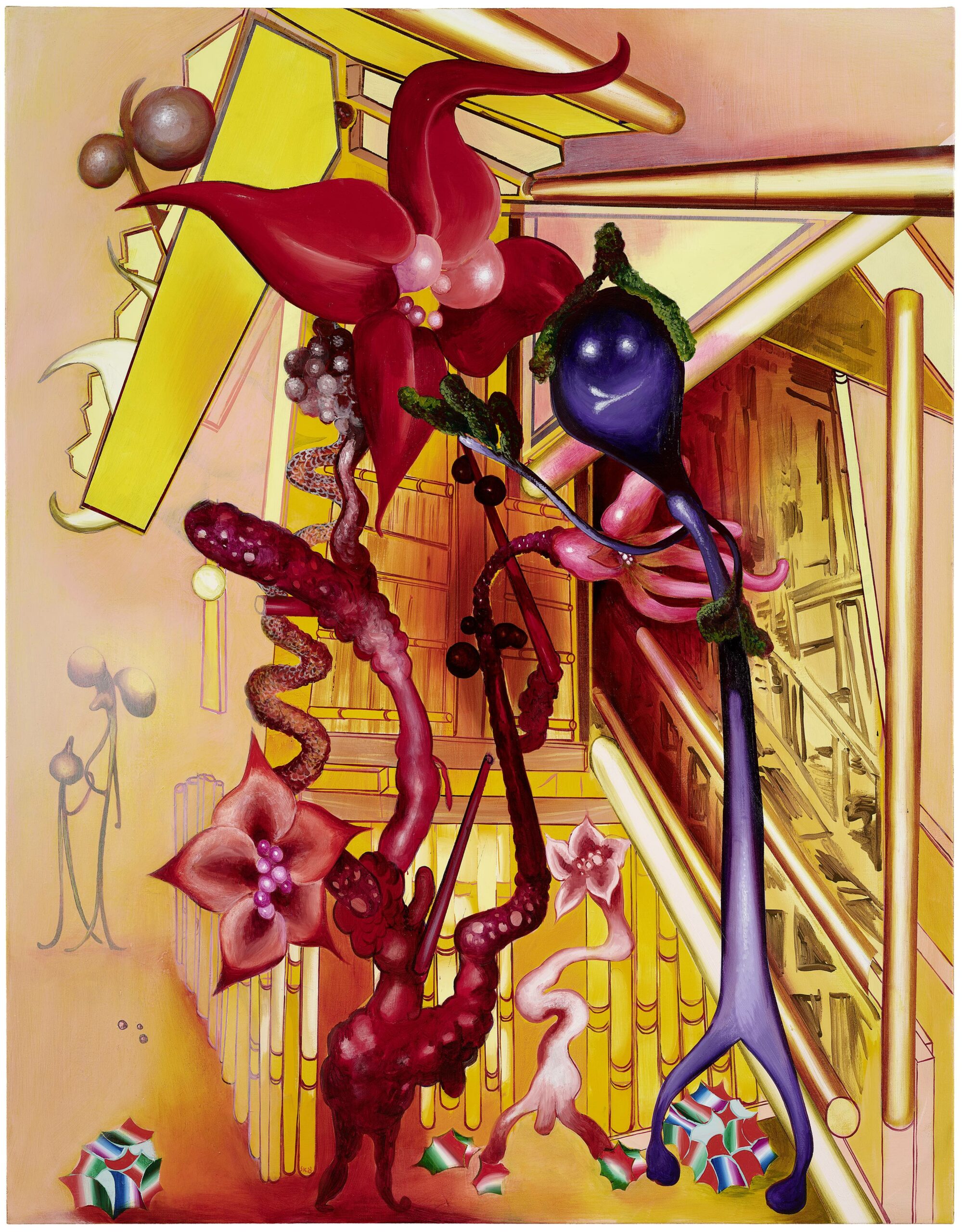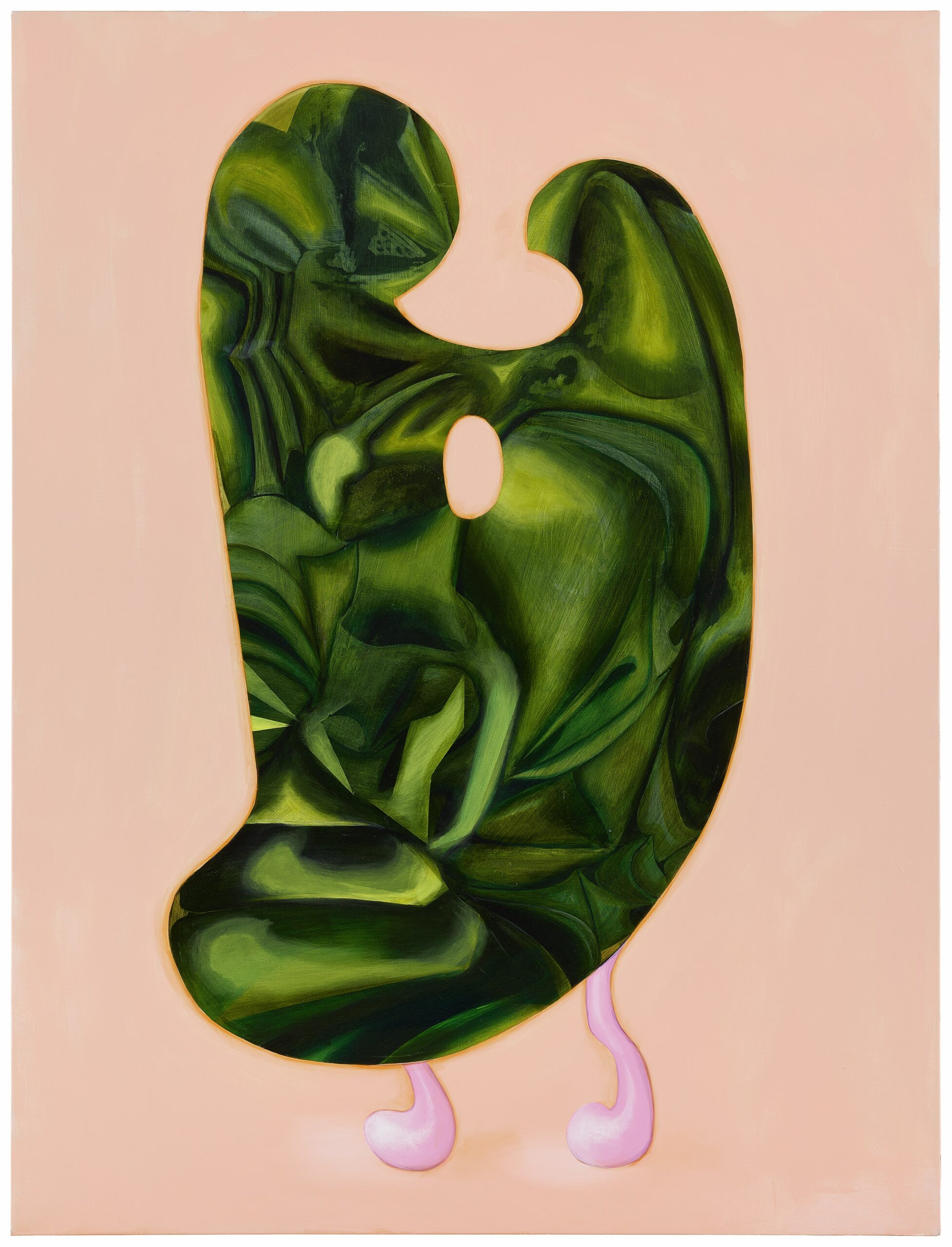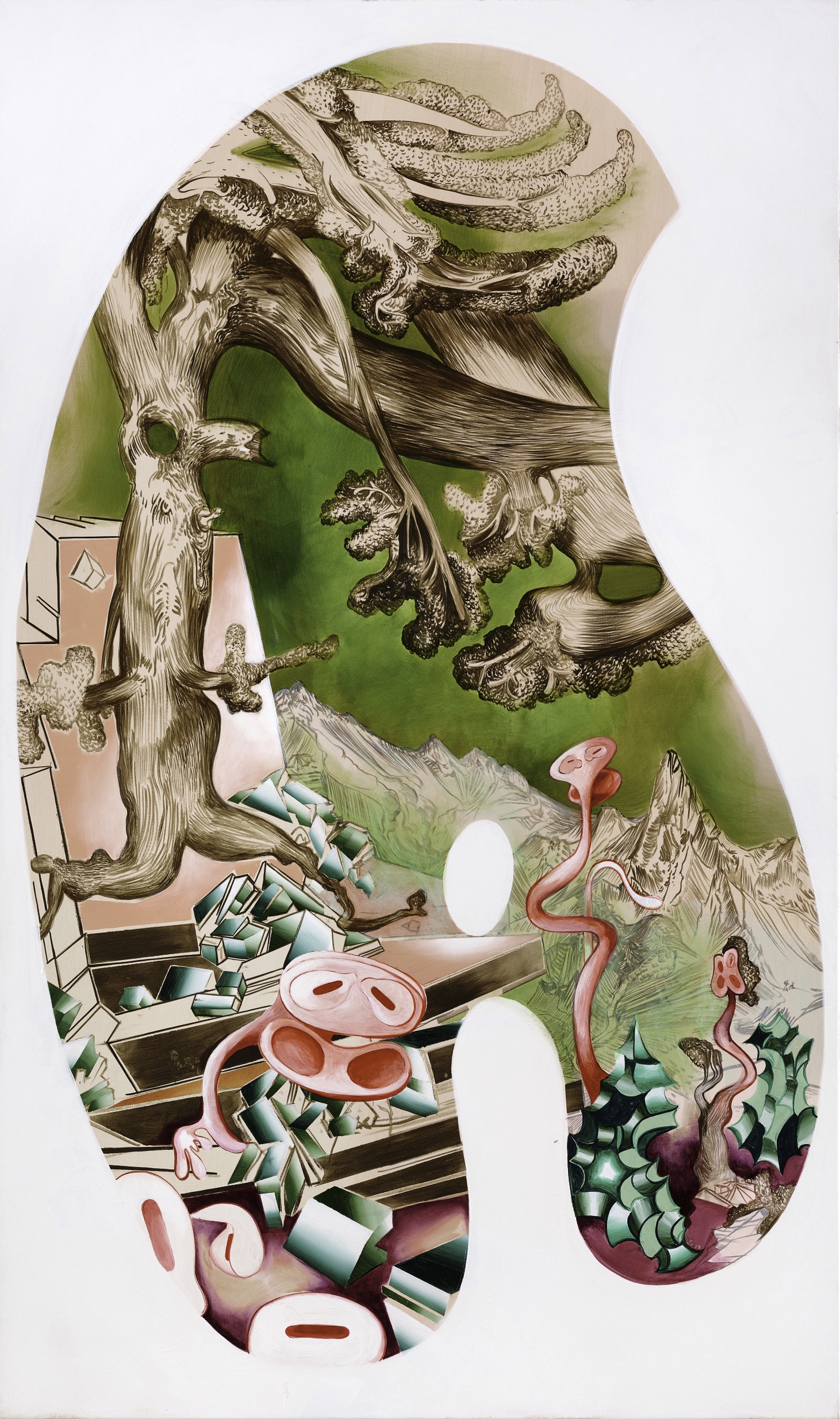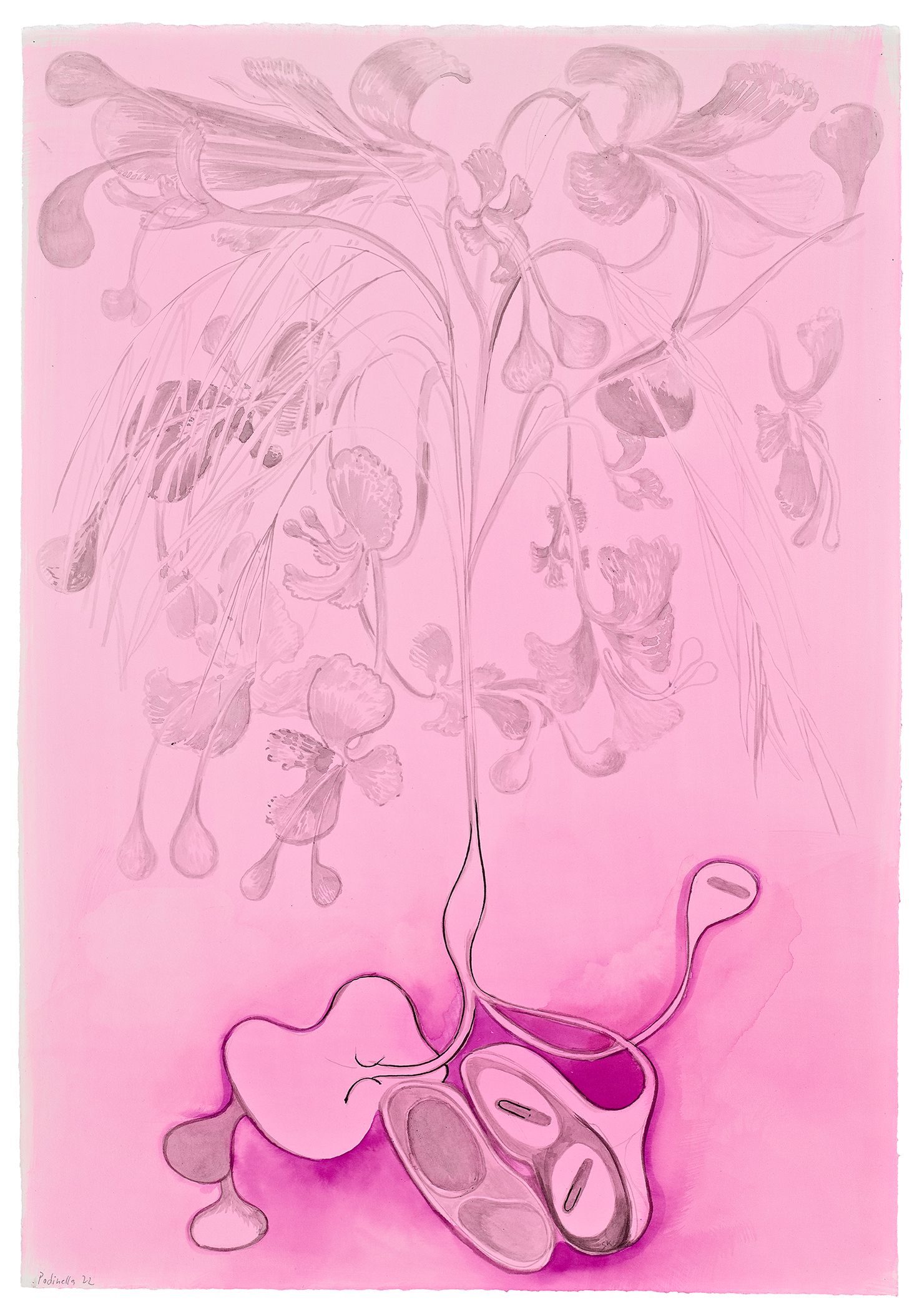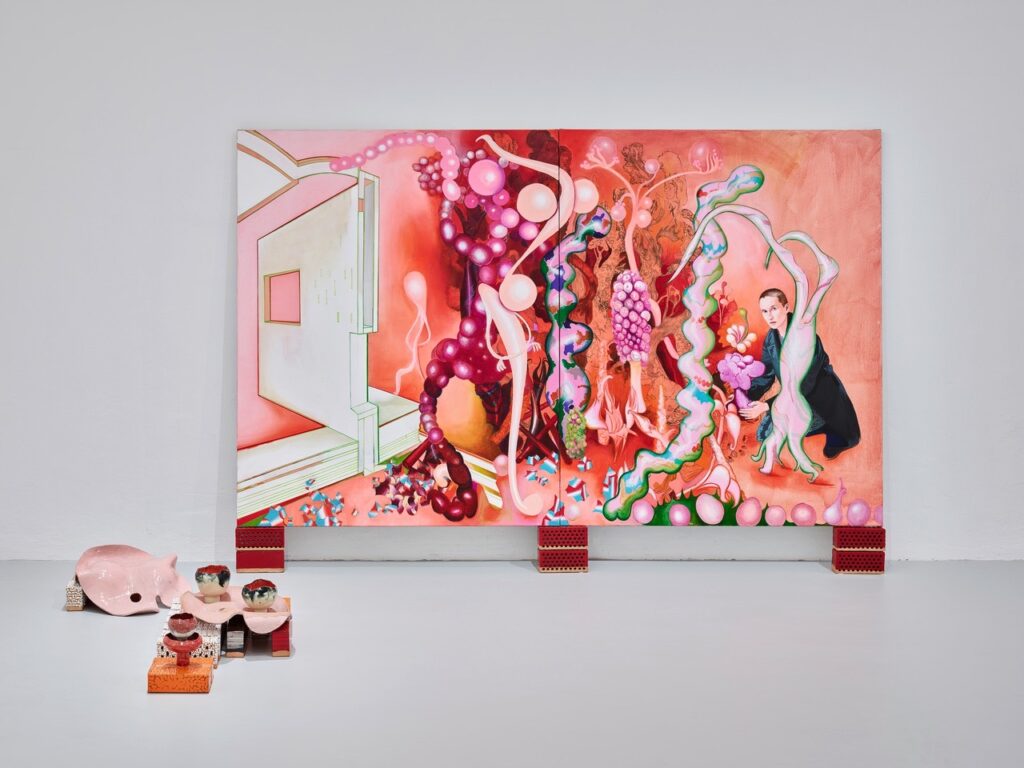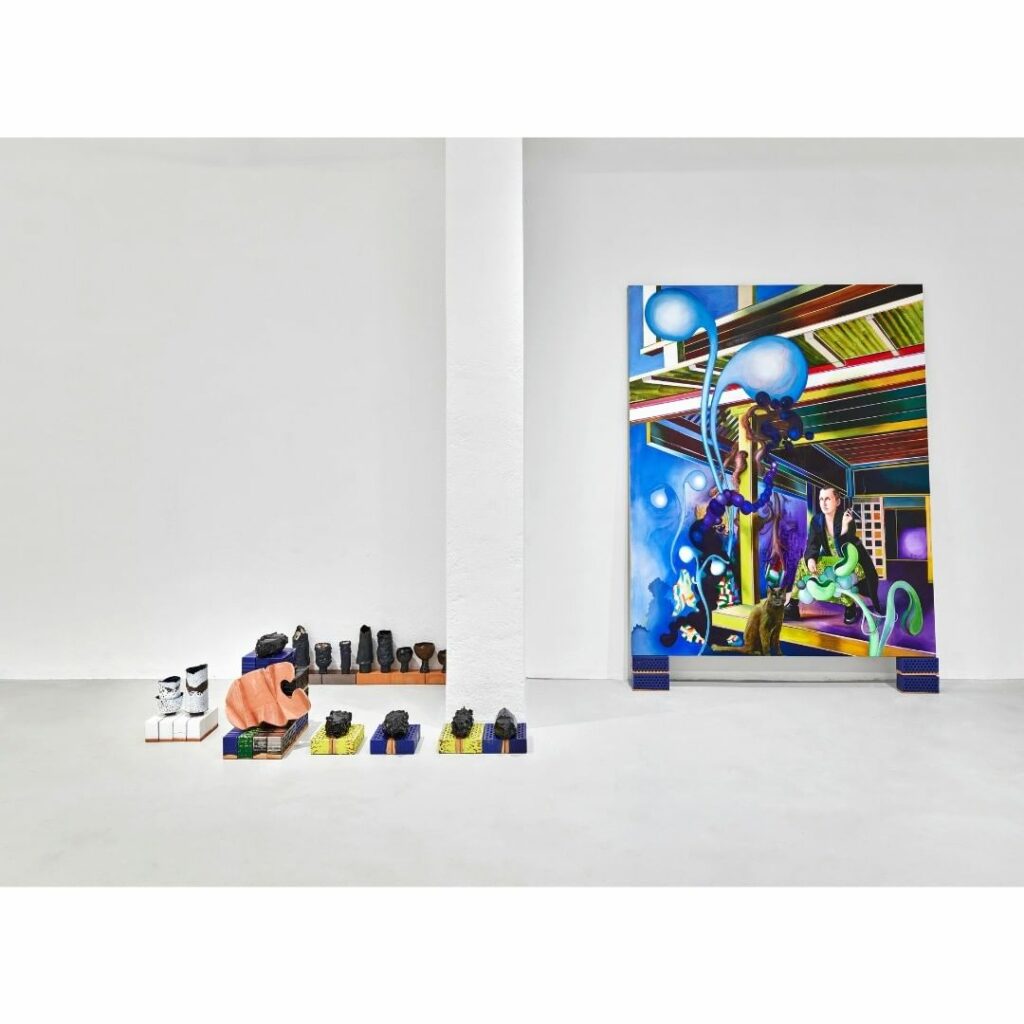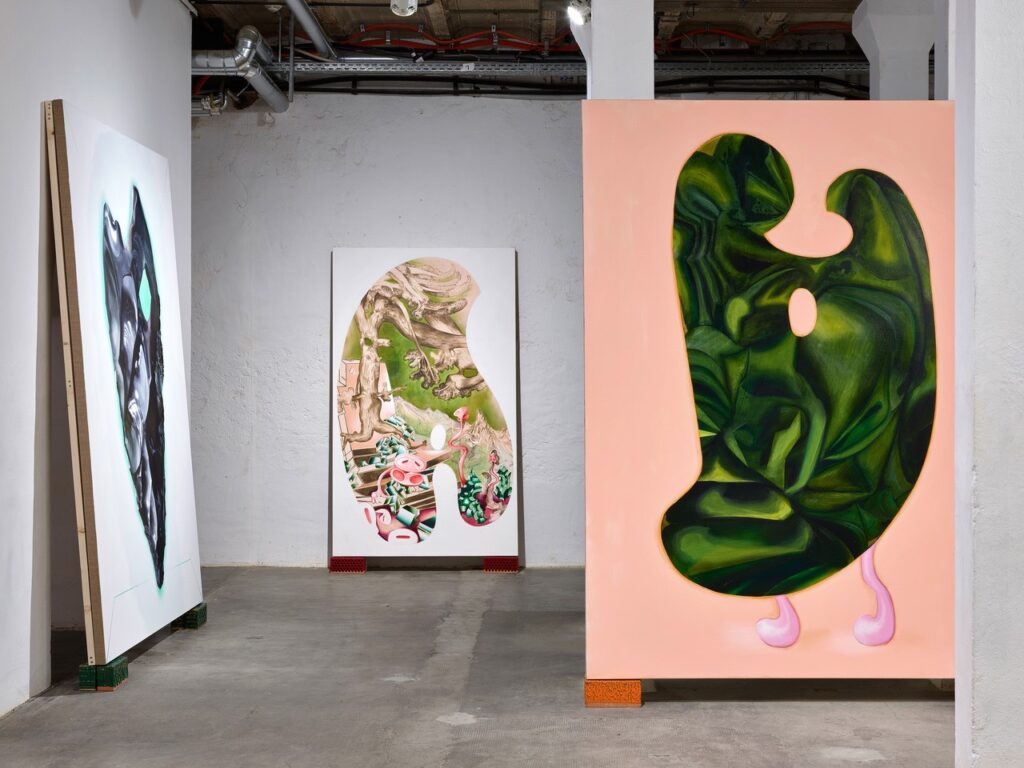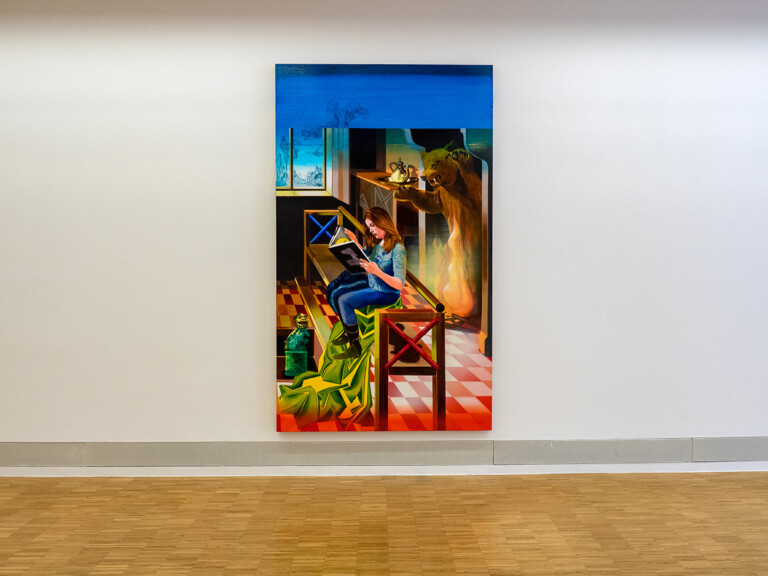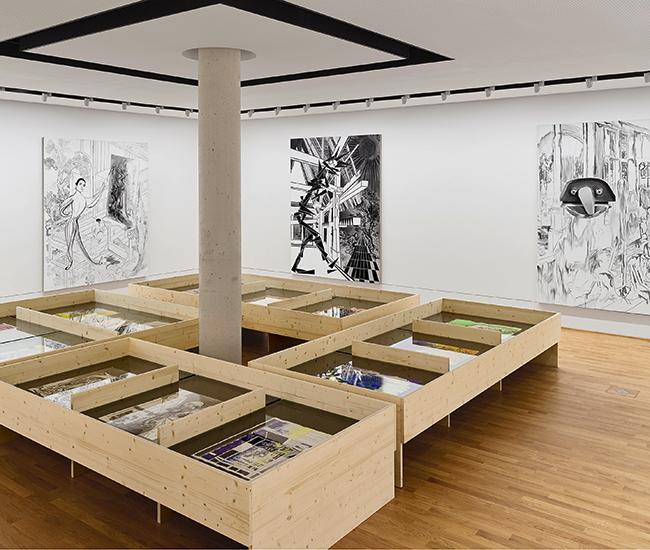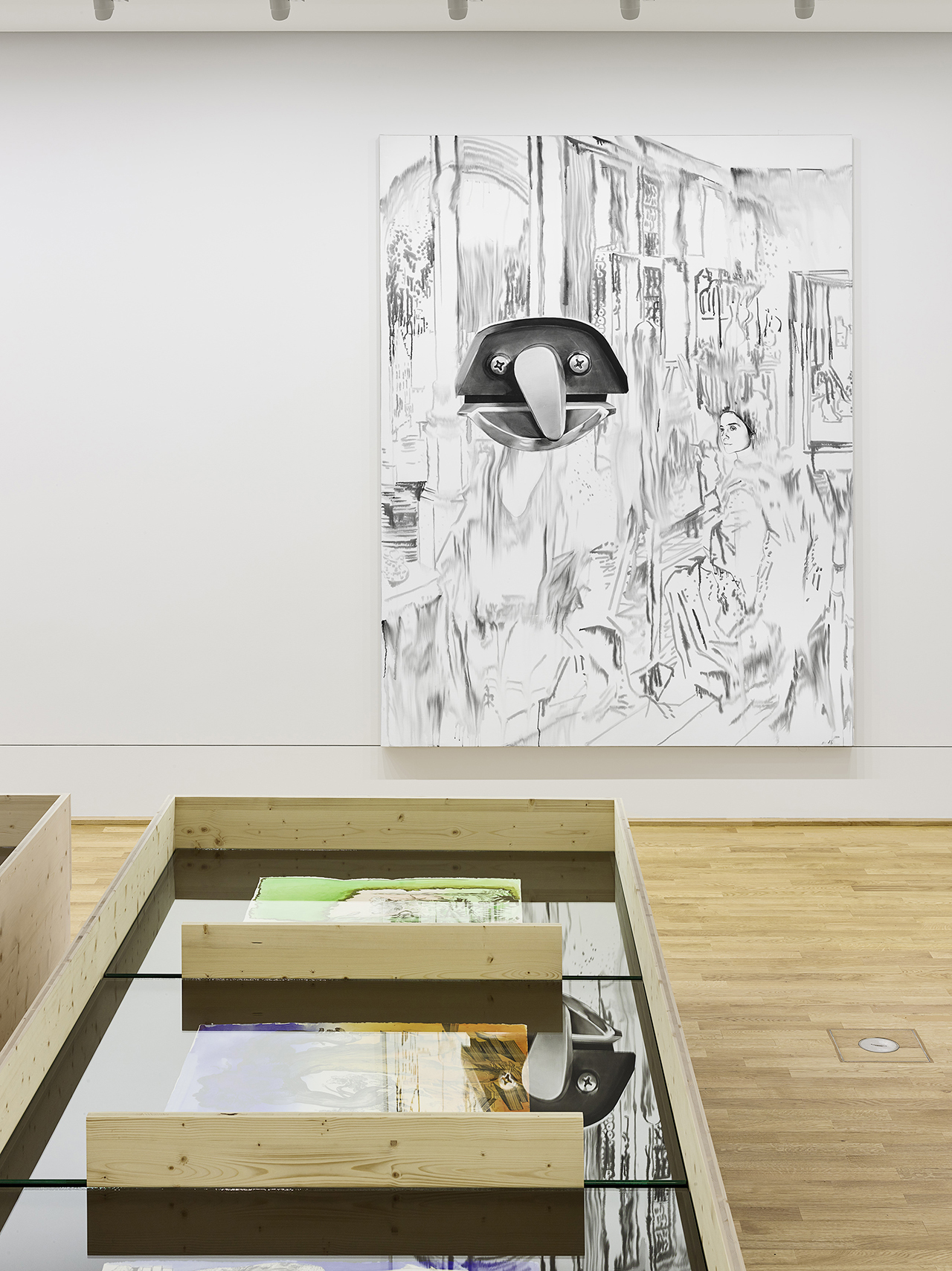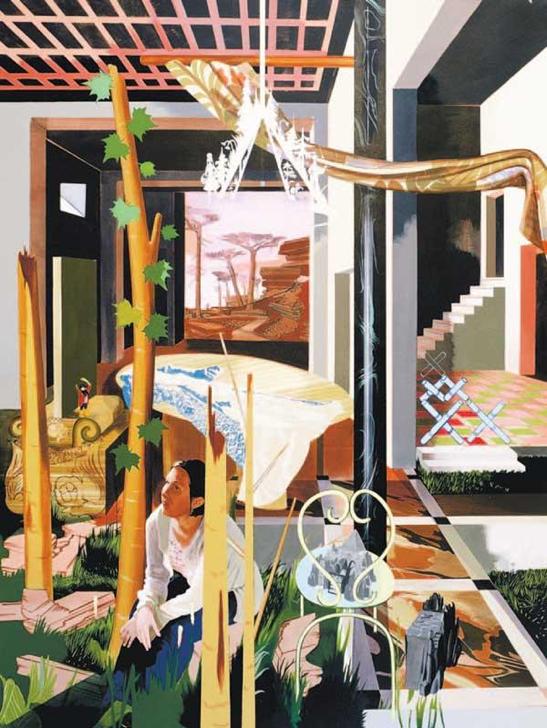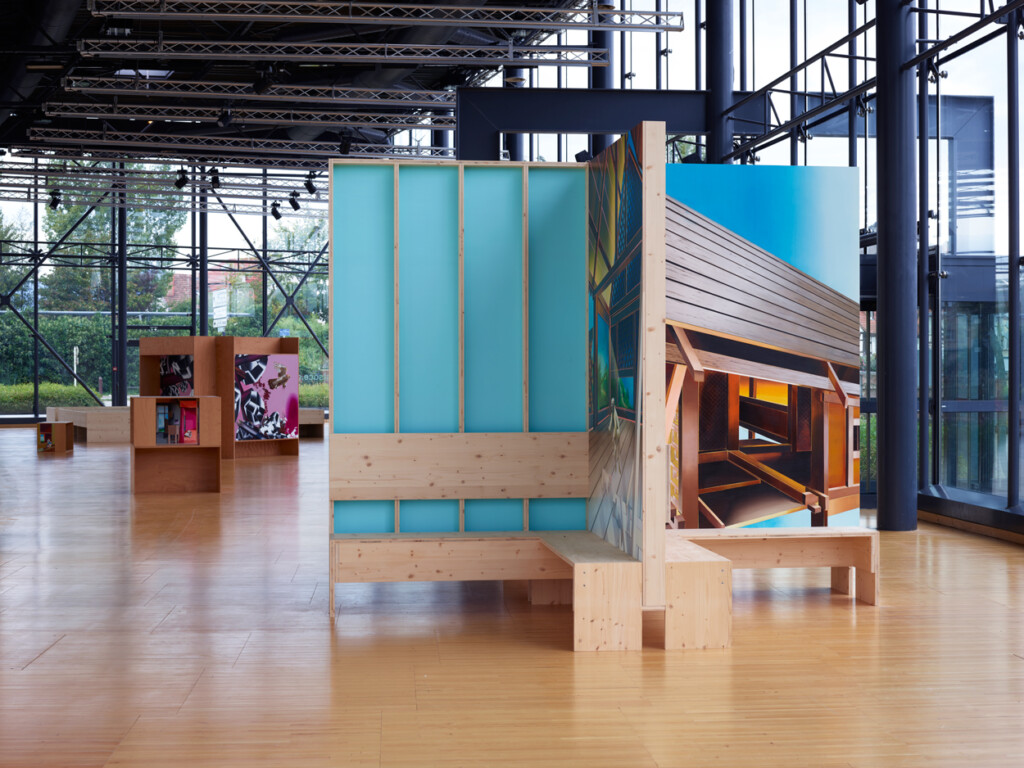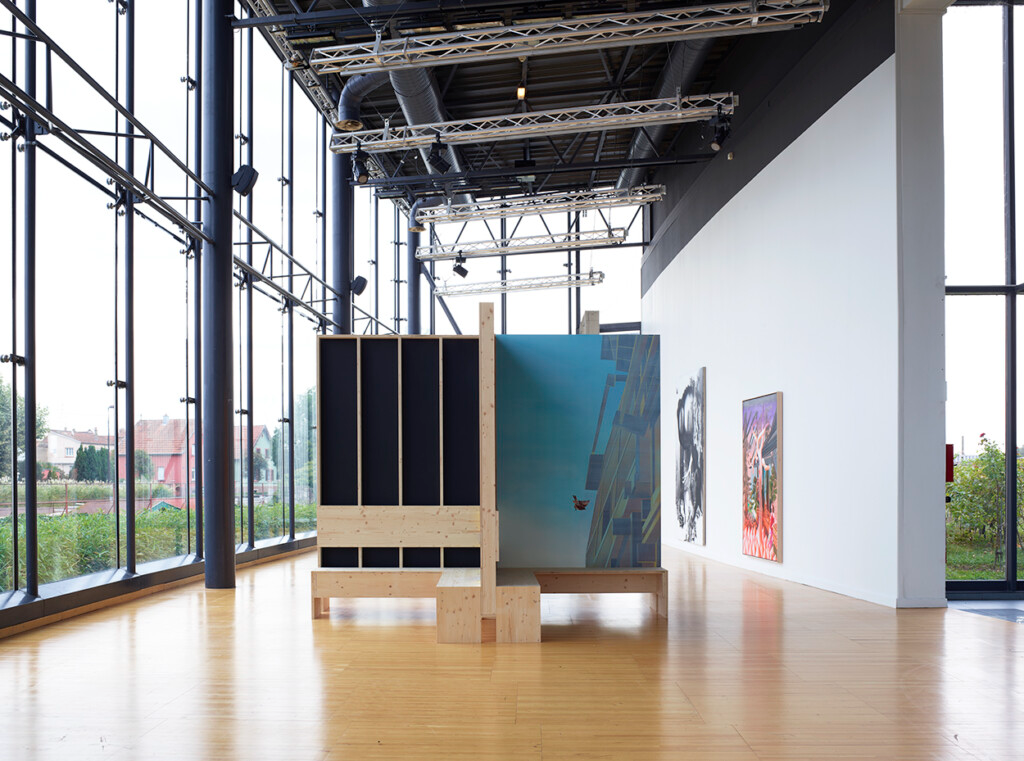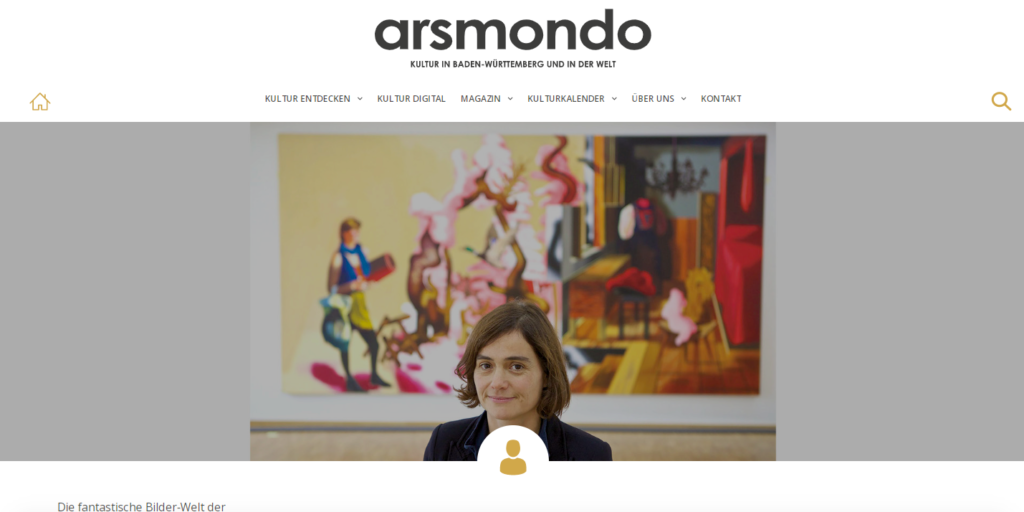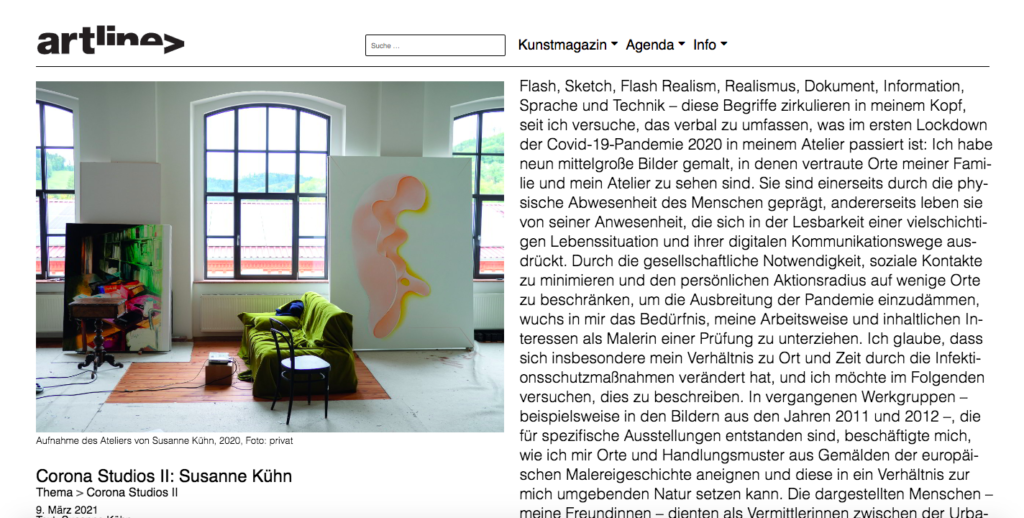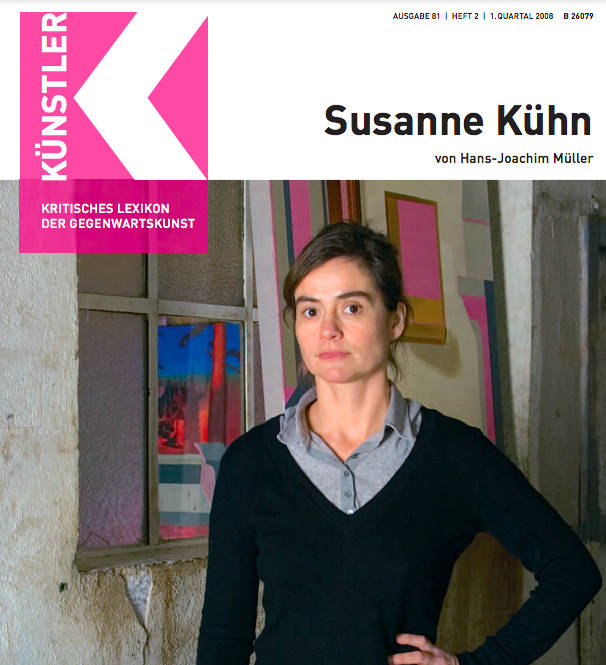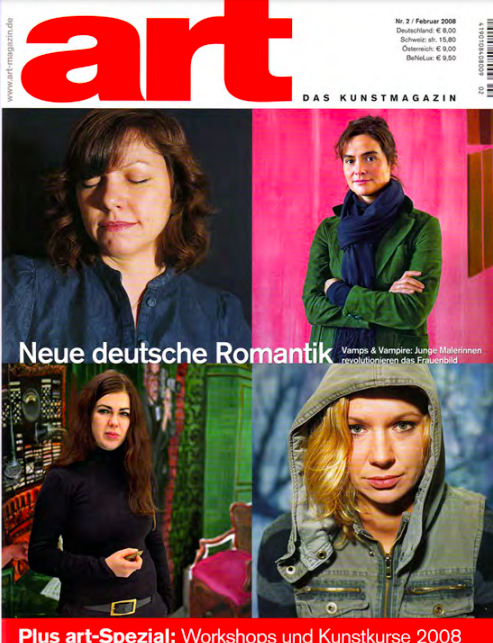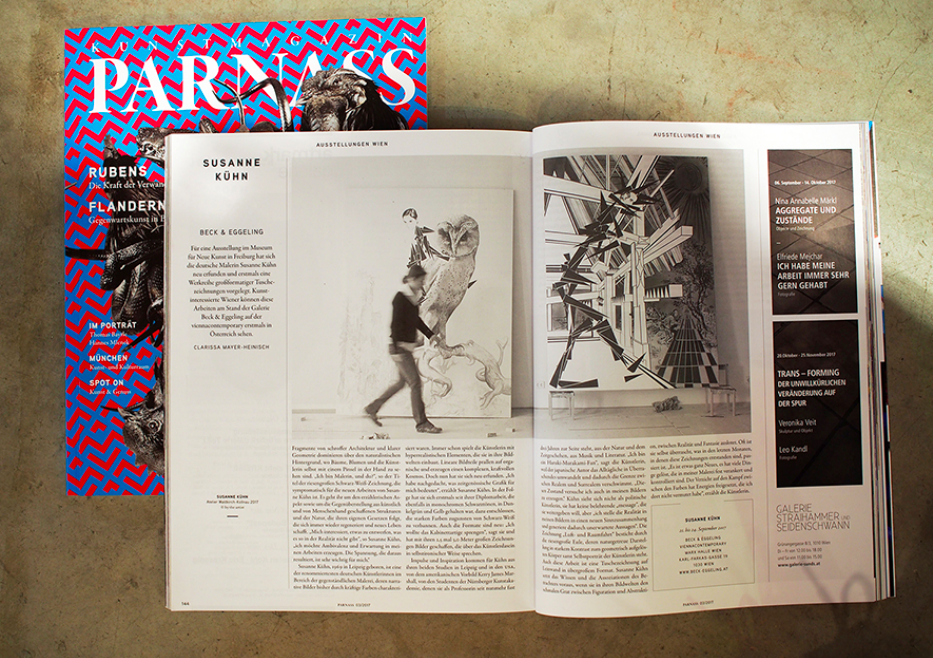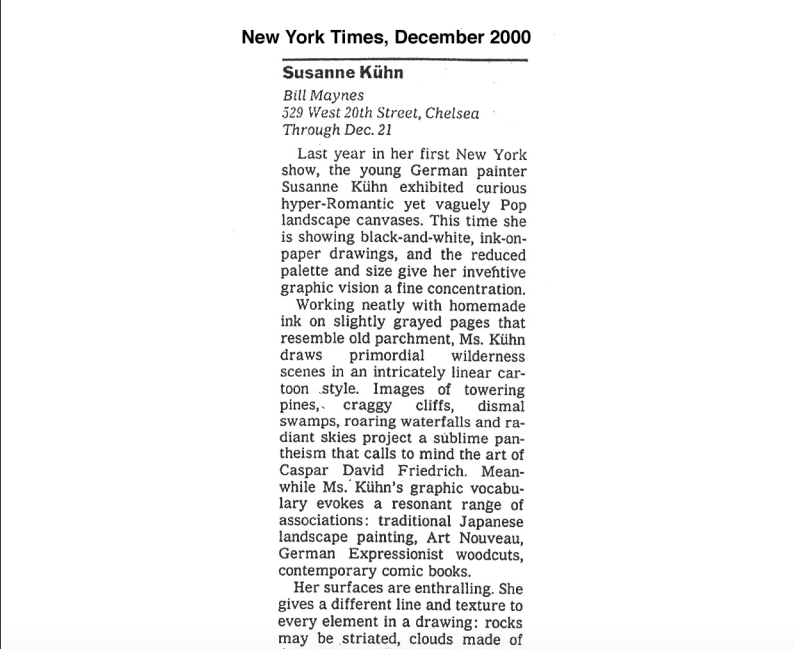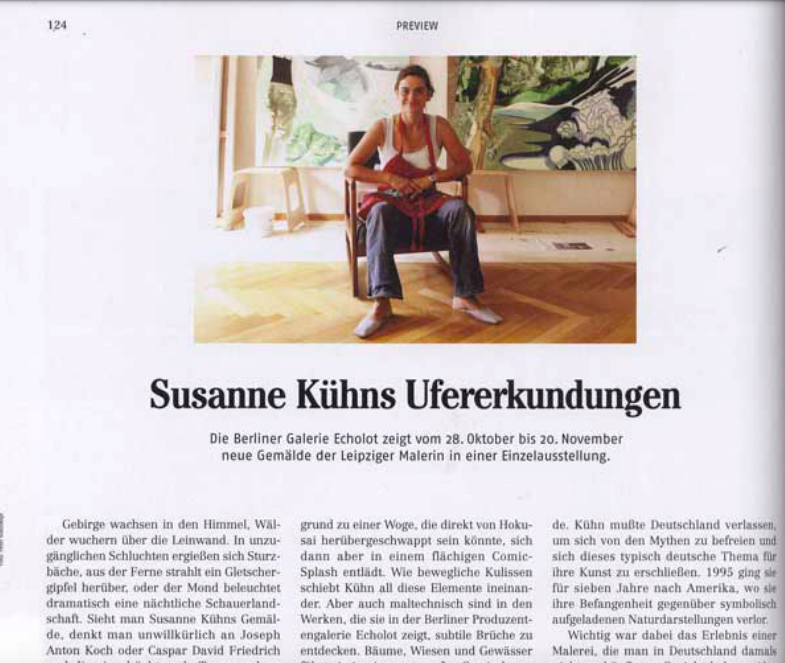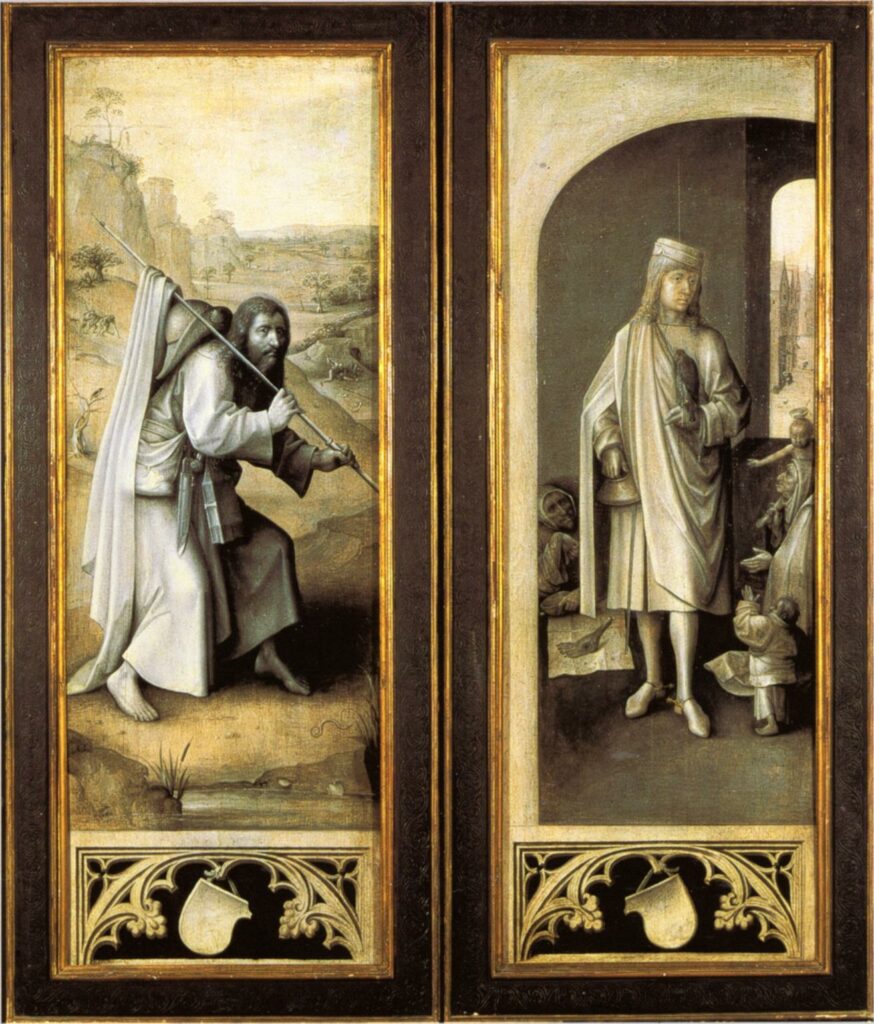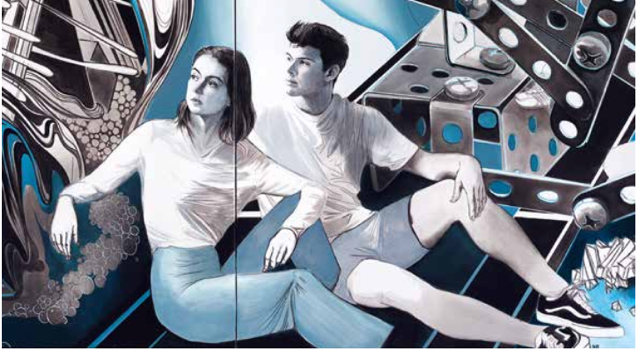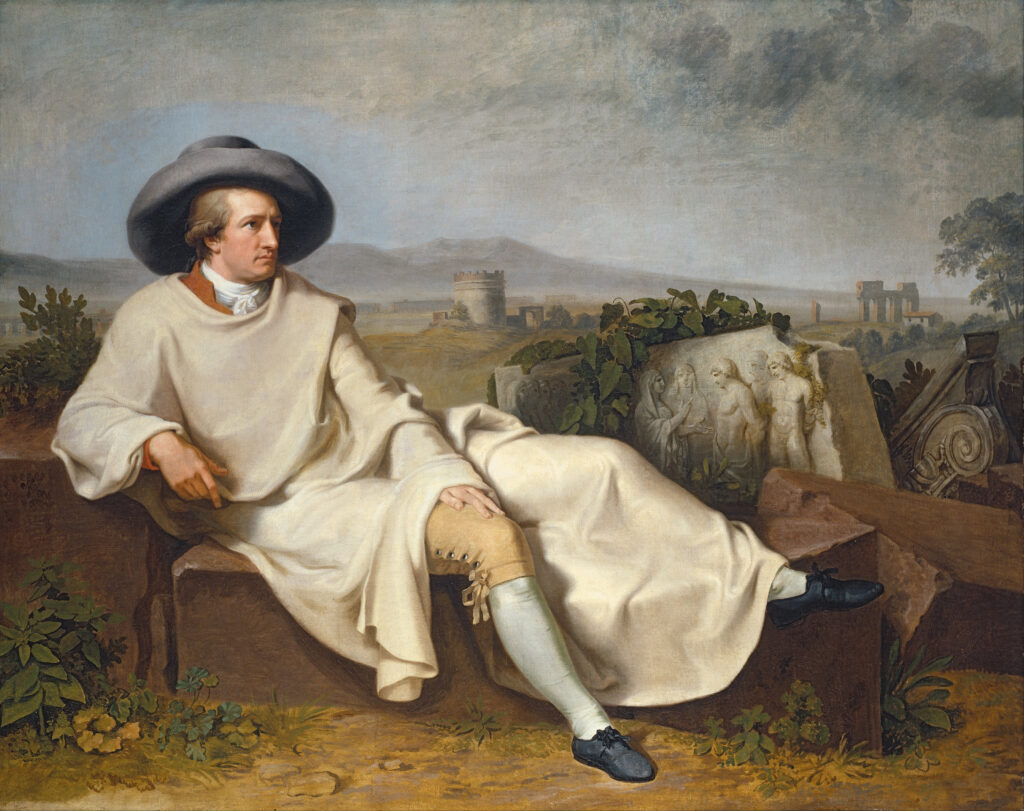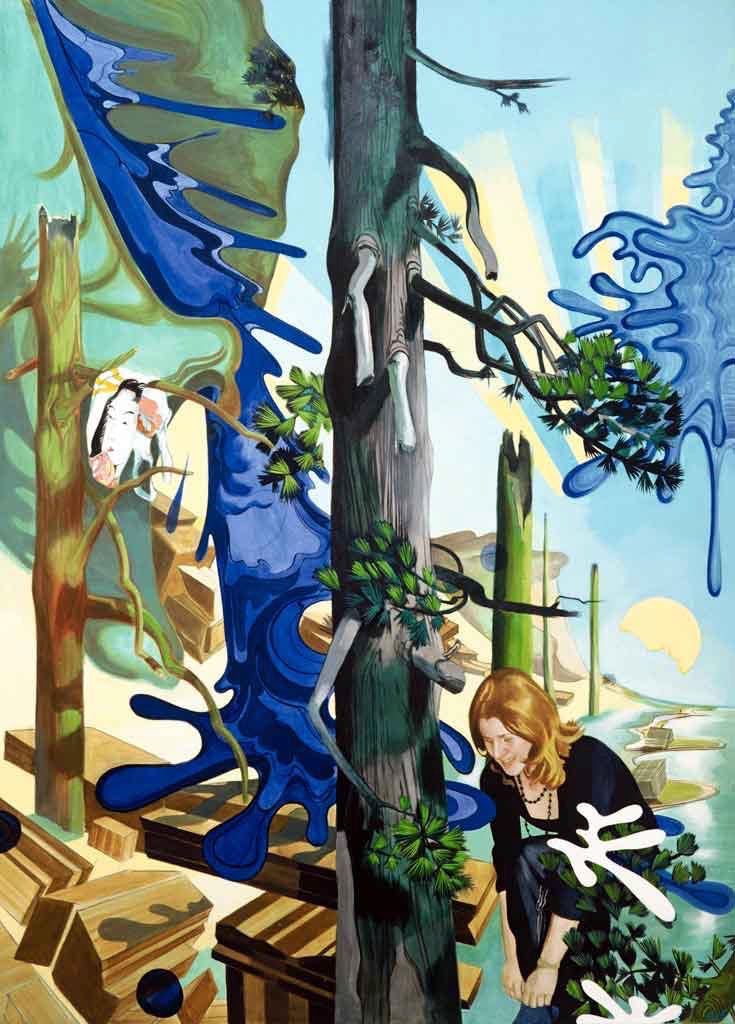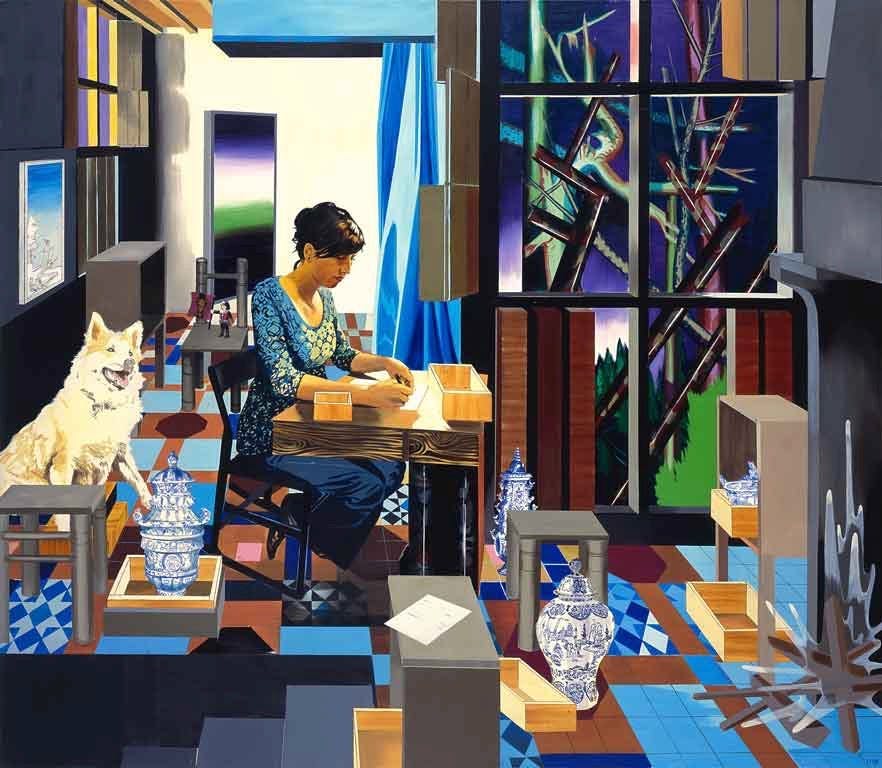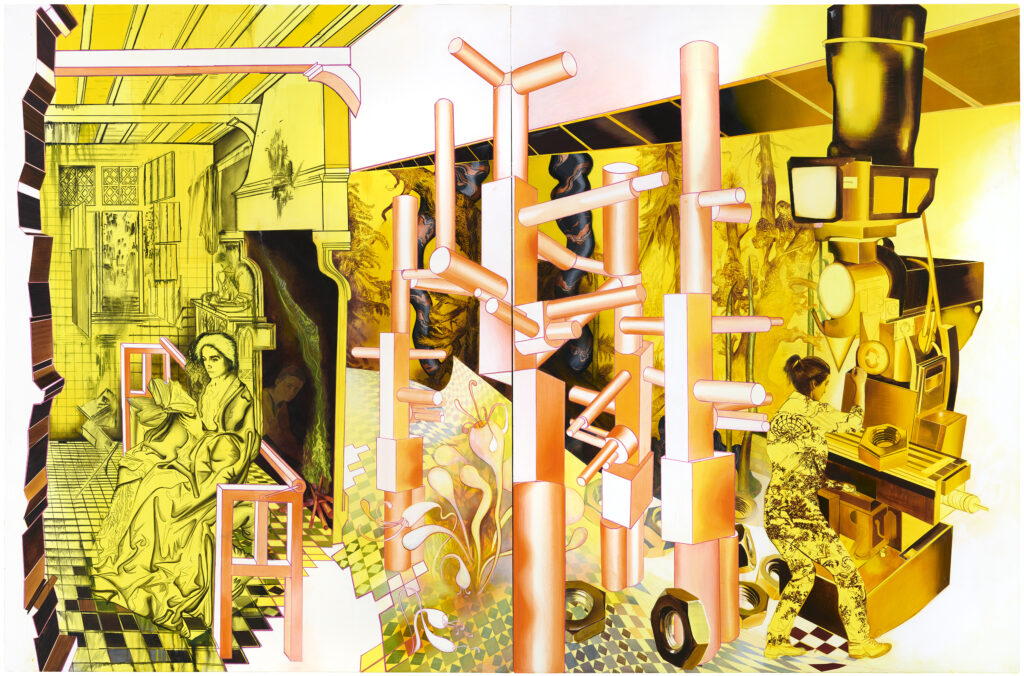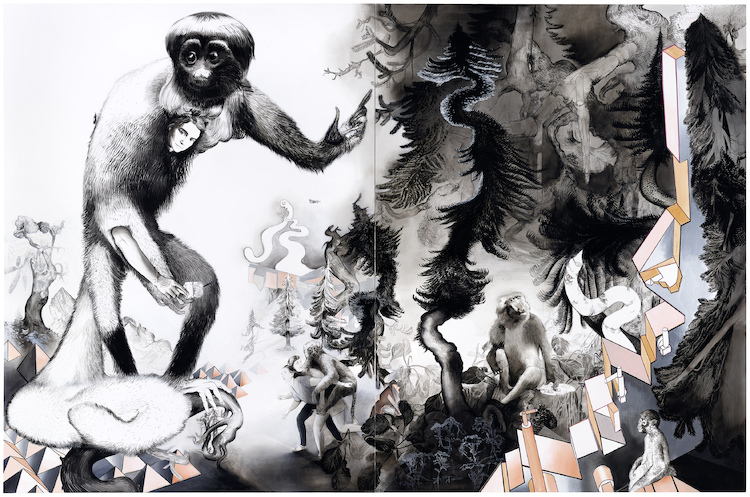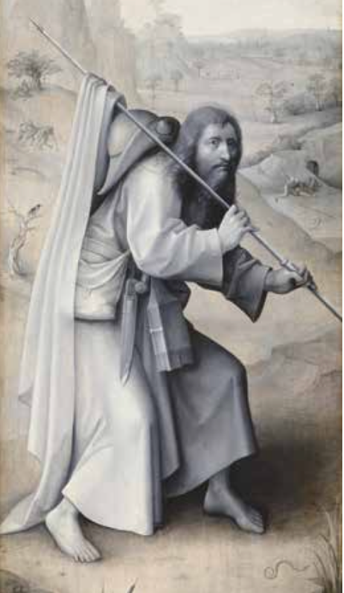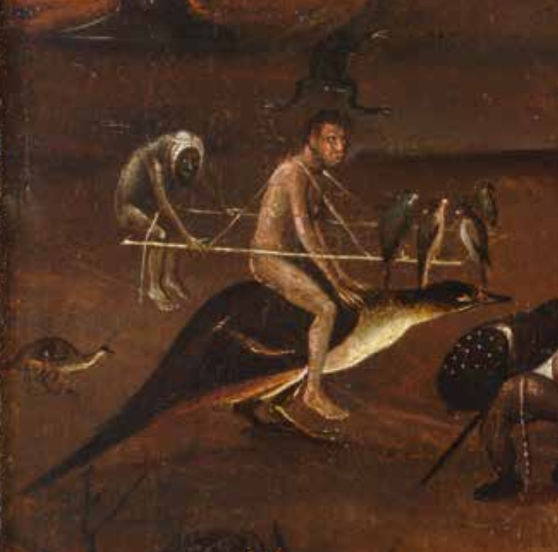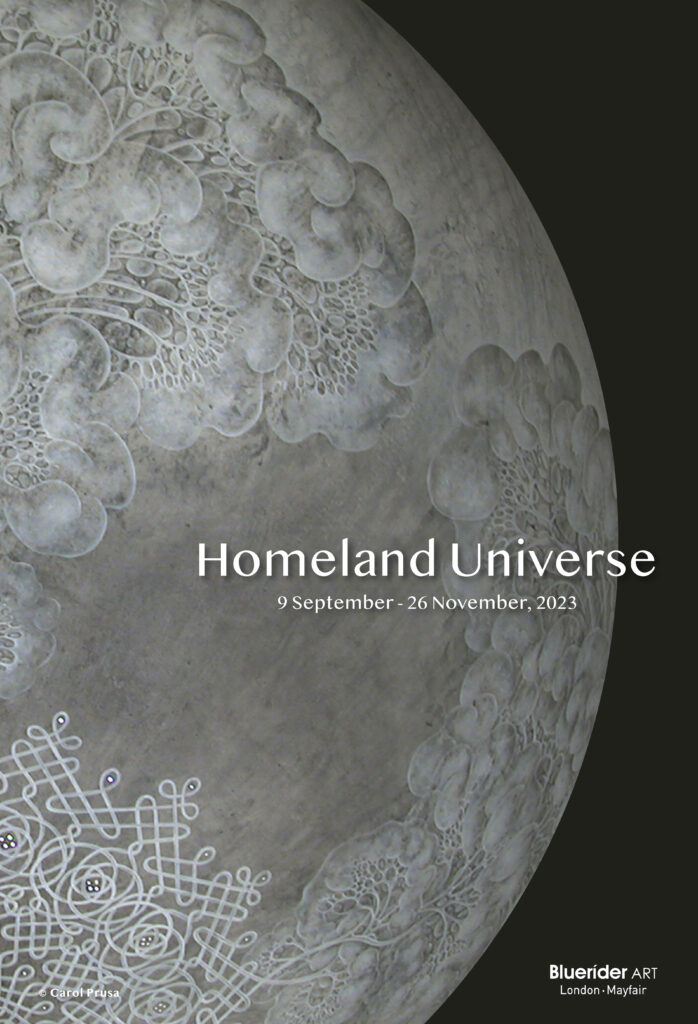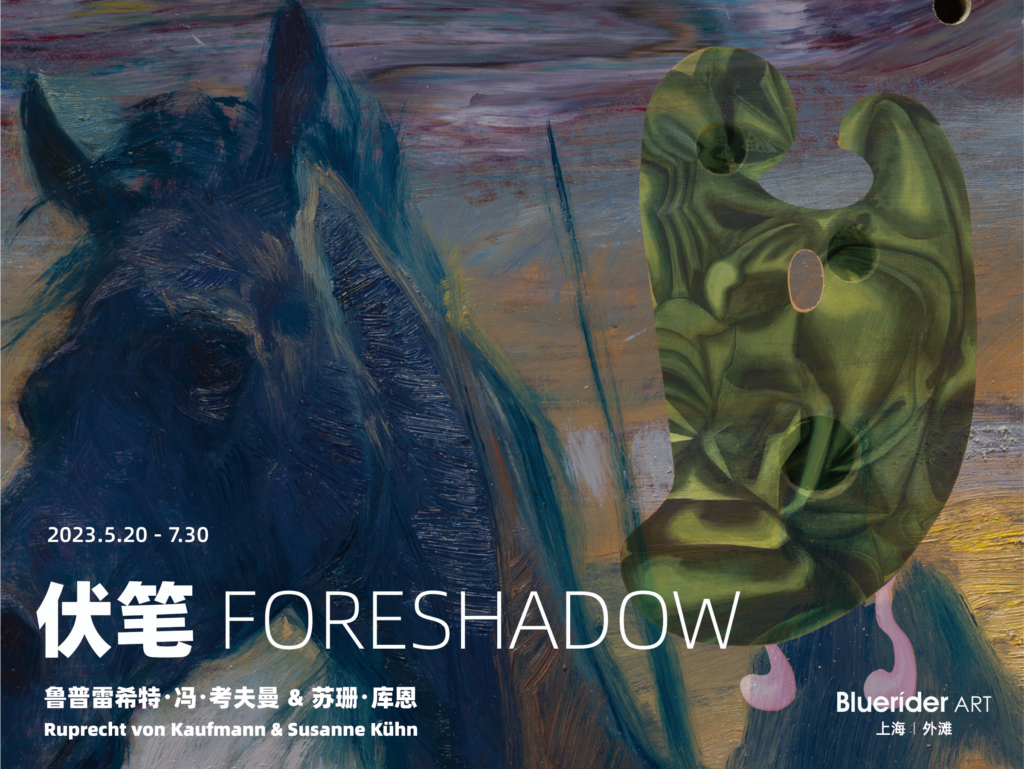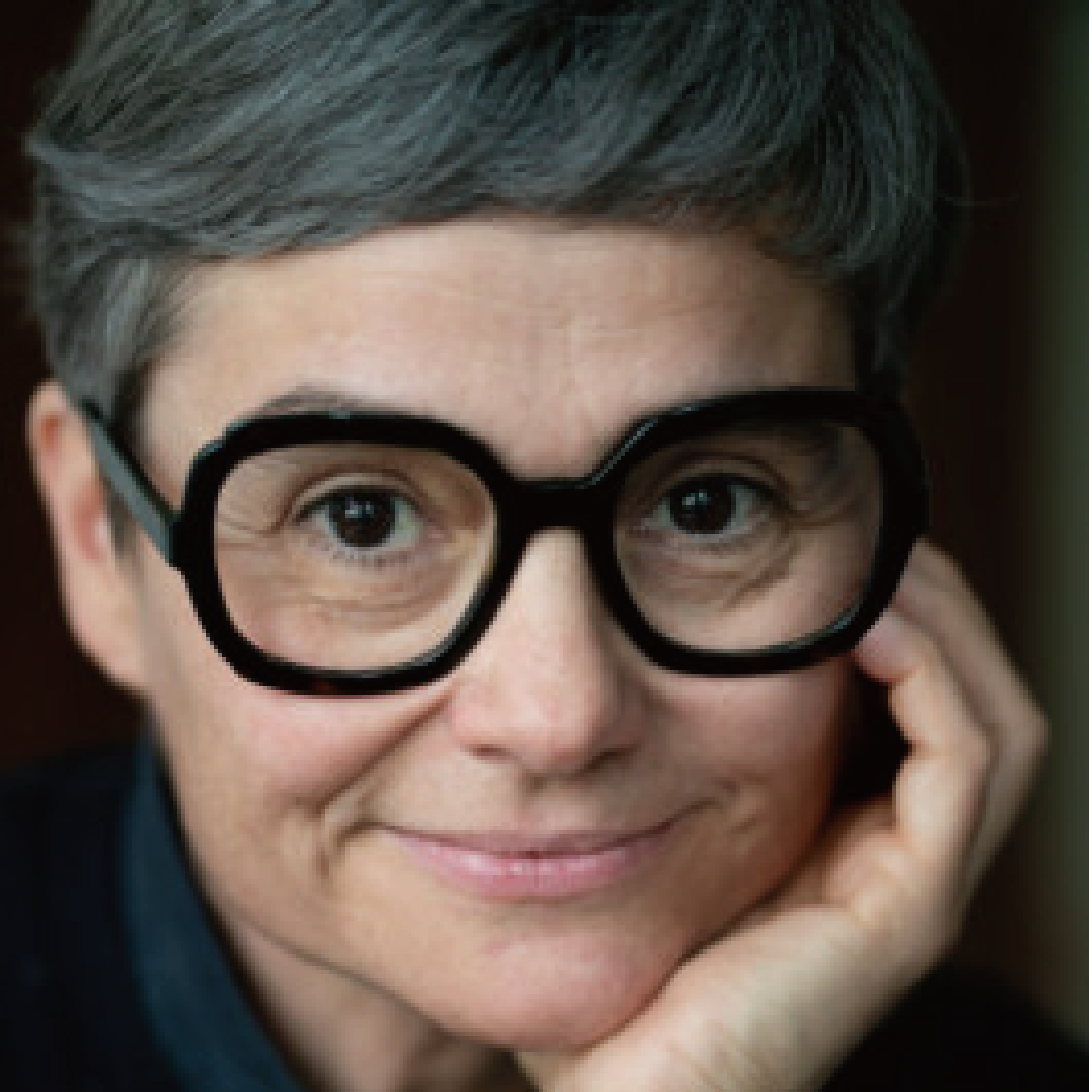

(Germany , b. 1969)
Susanne Kühn was born in Leipzig, Germany, currently lives and works in Freiburg and Nuremberg, Germany. She holds a Master's degree in Painting and Printmaking from the Leipzig Academy of Visual Arts, later pursuing studies at the New York Academy of Visual Arts, Hunter College, and was awarded a scholarship from the Harvard University Radcliffe Institute for Advanced Studies. Central to Kühn's practice is her highly animated and vivid execution of a precise level of craftsmanship through which she interweaves various painterly vernaculars and styles. Via this aesthetic approach, she engages with the history of painting from a female perspective, as well as exploring everyday life and futuristic narratives in her current work. Kühn's work has been showcased in solo exhibitions at various renowned venues, including the Gemäldegalerie der Akademie der Bildenden Künste in Vienna, the OMI International Arts Center in Ghent, New York, Haunch of Venison in London, UK, Sala Uno Contemporary Arts Centre in Rome, the Harvard Radcliffe Institute in Cambridge, USA, the Museum of Contemporary Art in Denver, USA, the Museum für Neue Kunst in Freiburg, etc. Her work is represented in collections worldwide including viz. the Busch-Reisinger Museum Collection / Harvard Art Museums, Cambridge, MA, USA, the Kemper Museum of Contemporary Art, the Knoxville Museum of Art, the Harvard Radcliffe Institute, Harvard University, Cambridge, MA, FRAC Alsace, France, Museum Frieder Burda, Baden-Baden Germany.. etc.
2022 “Profliferation – Vasa, Auginella & other sprouts”, Galerie für Gegenwartskunst, Ewerk Freiburg
2021 kunstmuseum celle, Germany
2021 Museum fur Neue Kunst Freiburg
2008 Museum of Contemporary Art Denver, USA
2019 House for a Painting, FRAC Alsace, France

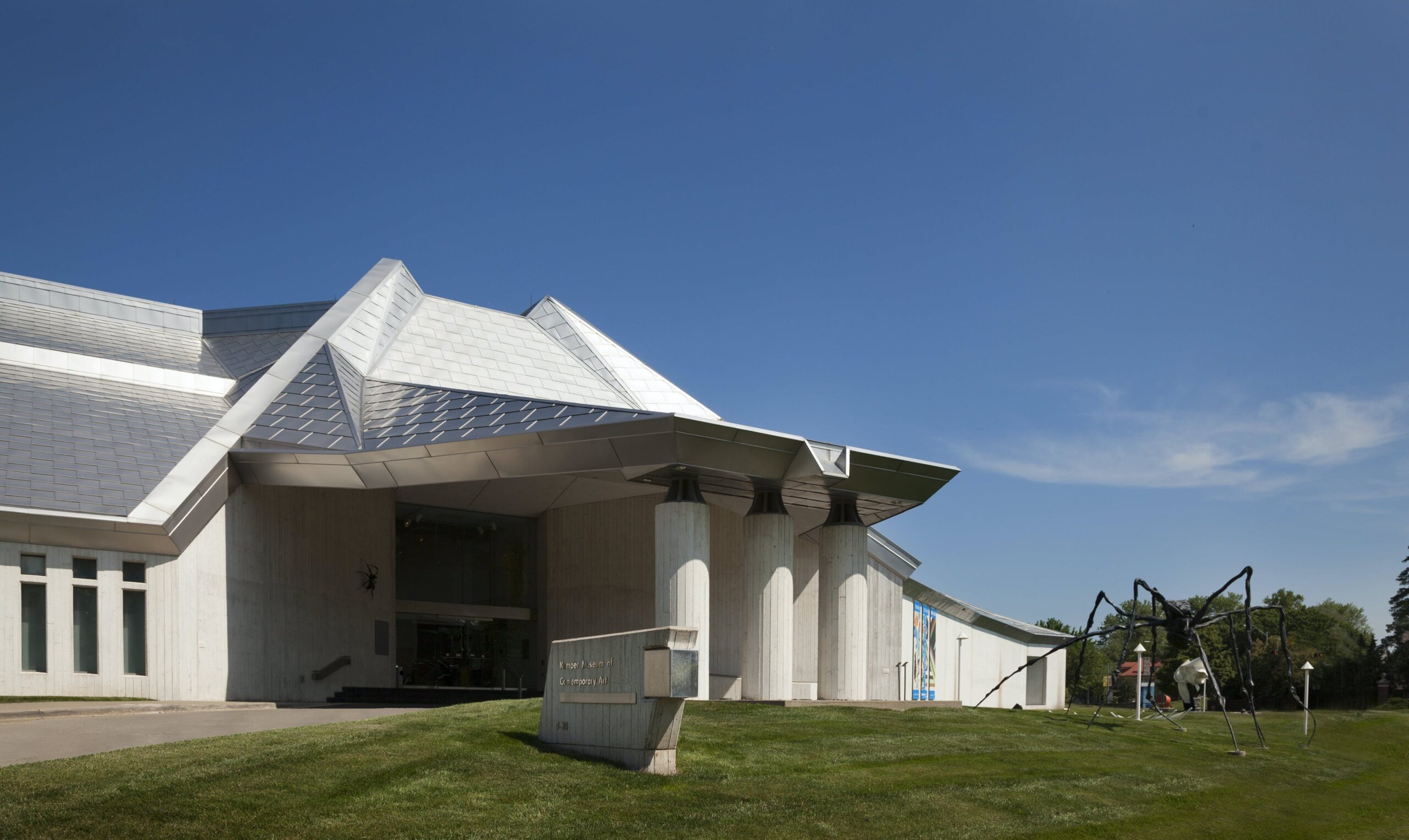
Collection of the Museum of Contemporary Art, Kansas City 
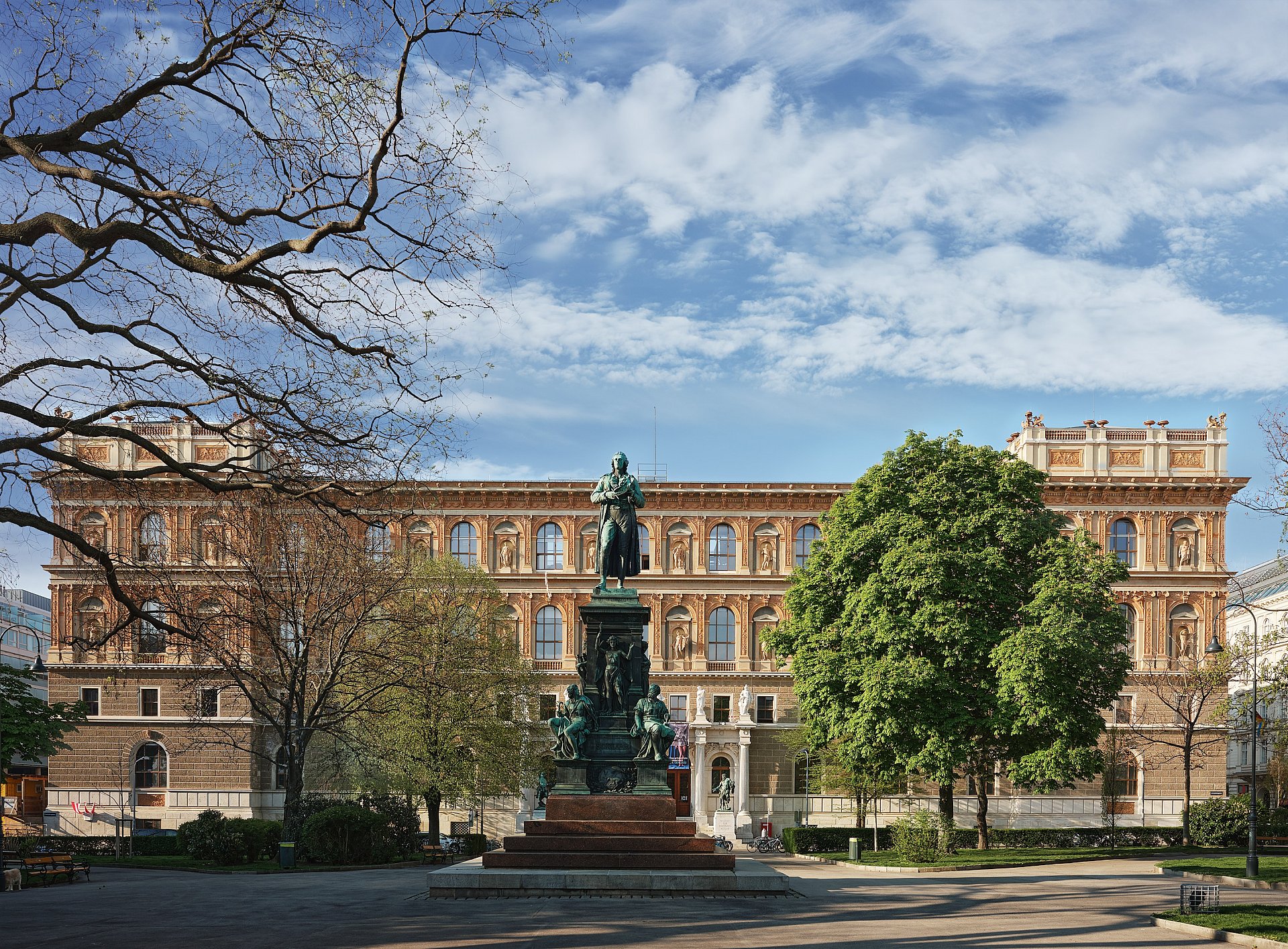
Collected by Academy of Fine Arts Vienna 

UBS Art Collection 
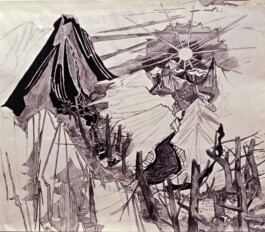
Collected by Harvard Art Museums, Cambridge, MA


Jan van Eyck, Arnolfini Portrait, 1434 

Albrecht Dürer, Self-Portrait, 1500 

Cindy Sherman,Untitled (#193),1989
Susanne Kühn's realistic paintings transcend and juxtapose elements from different times and spaces. Her works are characterized by strong, clear contours and vibrant colors, combining naturalistic elements with highly artificial forms. She utilizes various media acrylic pigments, mixed media, printmaking, and ceramics. Her works often depict mountains, moonlight, decayed wood, animals, and other natural elements, developed her own color palette, cleverly combining historical elements in a whimsical yet realistic manner. Artificial spaces are central to Kühn's works, where she frequently references compositions from the Renaissance period, this results in an illusion of precision in reality through layers of space, atmosphere, and light. Ranging from classical to contemporary, Kühn's works provide viewers with a sense of elements crossing different times and spaces, presenting the illusion of reality from classical perspectives combined with the experiential atmosphere of virtual reality. Kühn invites viewers to explore her created virtual world. In her surreal apocalyptic scenes, the encounter between humans, machinery, and monkeys metaphorically represents the rise and fall of civilization, nature's resistance, and the precarious fate of humanity.


Susanne Kühn|VASA, Smoke and Plant|2023| 200x160cm| Acrylic on canvas 

Susanne Kühn|Palette- Palette Konrad Witz| 2022| 250x190cm| Acrylic on canvas 
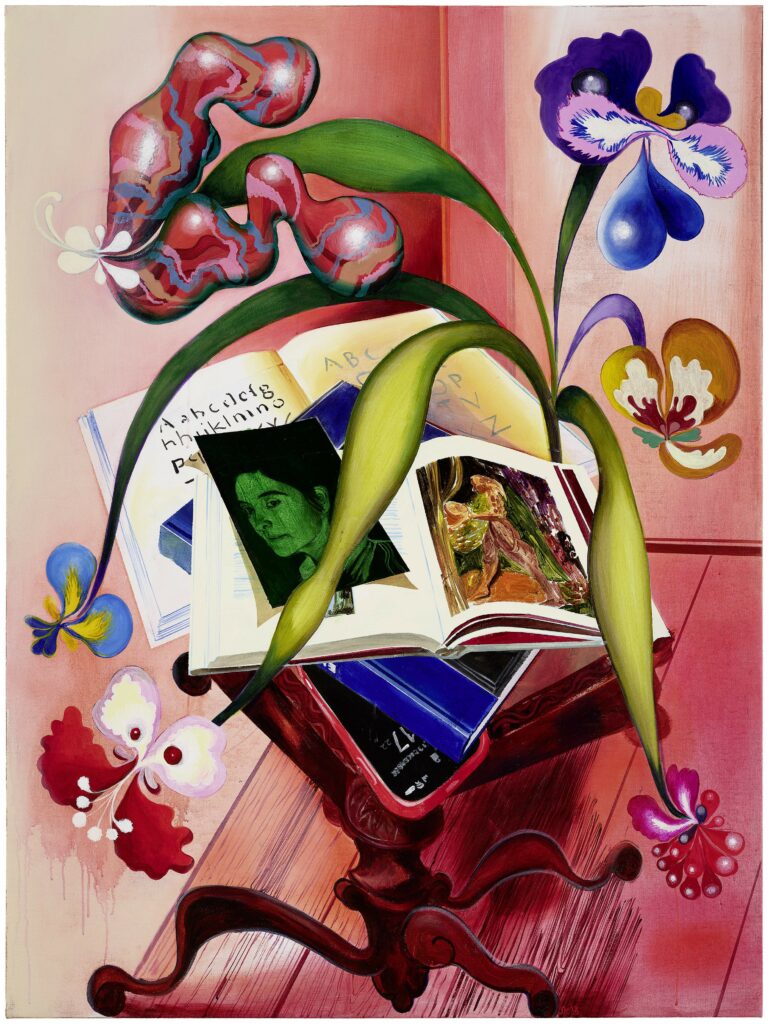
Susanne Kühn|Still life with images and flowers|2023|160x120cm|Acrylic on canvas 
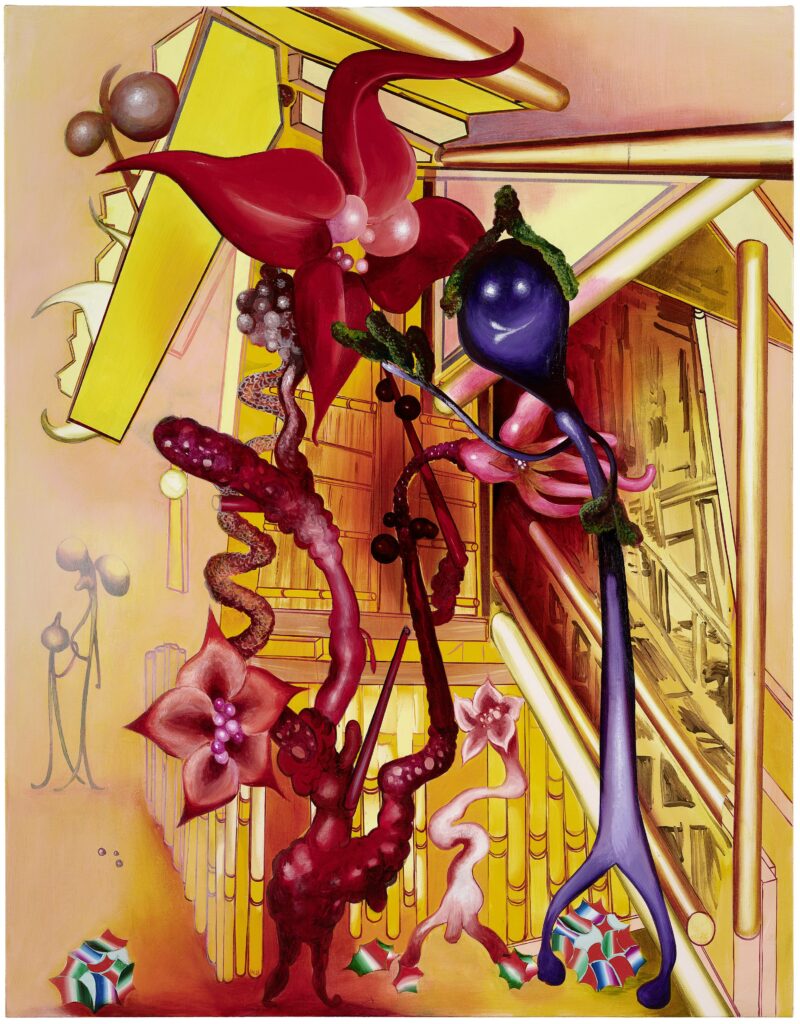
Susanne Kühn|This is the back of my garden|2023| 180x140cm| Acrylic on canvas 

Susanne Kühn|Rosella|2022| 52x38cm| Ink and watercolour on paper, framed 
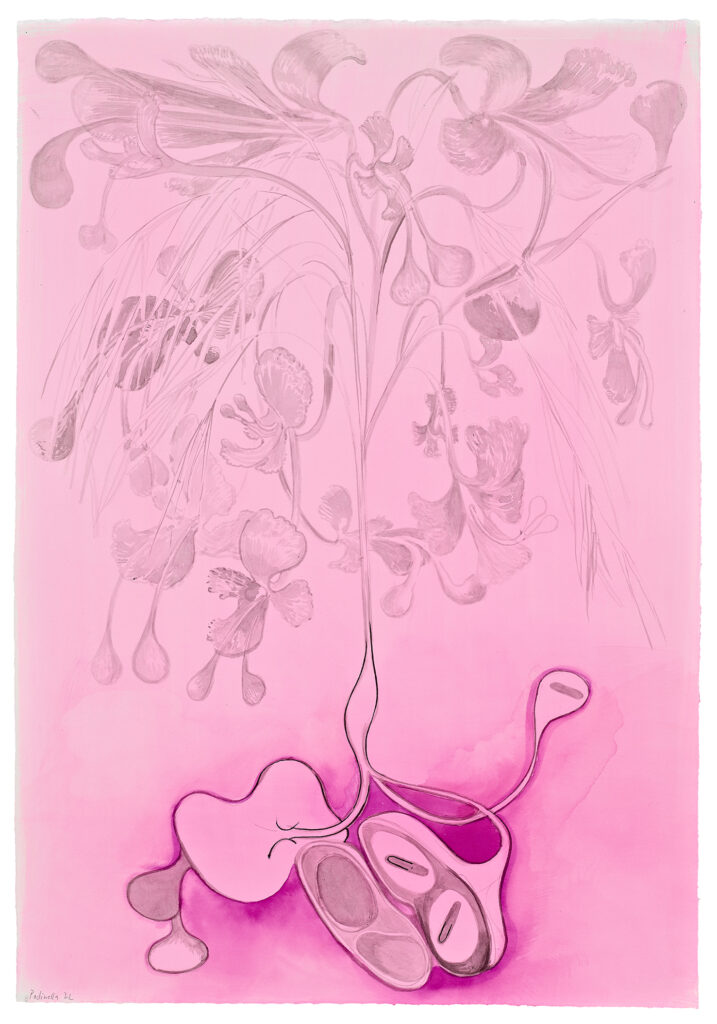
Susanne Kühn|Podipede|2022|51.5×35.5cm|Ink and watercolour on paper, framed
Education
1990-1995 Diploma Degree Program in Painting and Printmaking, Hochschule für Grafik und Buchkunst Leipzig, Germany
1992 Short-Term Study Grant, DAAD, University College London, UK
1995-1996 Postgraduate Grant, DAAD, School of Visual Arts and Hunter College, New York, USA
2001-2002 Harvard Radcliffe Institute Fellowship, Harvard University, Cambridge, USA
1995-2002 work and studies in New York and Boston, USA
2021 Harvard Radcliffe Summer Fellow, Harvard University, Cambridge USAsince 2015 Professor for Painting, (Chair) Academy of Fine Arts, Nuremberg, Germany
Since 2002 lives and works in Freiburg and Nuremberg, Germany
Selected Solo Exhibitions
2023 Susanne Kühn, GIGMunich, part of Various Others Munich, Lothringer 13 STUDIO
2022 Susanne Kühn, Profliferation – Vasa, Auginella & other Sprouts, Galerie für Gegenwartskunst, E-Werk Freiburg, Germany
2021 Susanne Kühn. Malerei OnSite, Kunstmuseum Celle mit Sammlung Robert Simon, Germany
2021 FLASH – Susanne Kühn, Beck & Eggeling Düsseldorf, Germany
2020 BANK – Inessa Hansch + Susanne Kühn, Augustinermuseum Freiburg, Germany
2019 BOSCH & KÜHN, Gemäldegalerie der Akademie der bildenden Künste Wien, Austria
2019 “PALETTE”, Beck & Eggeling Vienna, Austria
2017 Susanne Kühn, viennacontemporary art fair, Beck & Eggeling, Vienna, Austria
2017 Susanne Kühn, SPAZIERGÄNGE & andere STORIES, MNK im Haus der Graphischen Sammlung, Augustinermuseum Freiburg, Germany
2016 Susanne Kühn, ArtOMI International Arts Center, Ghent, New York, USA
2015 BANK, Galerie Kleindienst Leipzig, Germany
2014 Susanne Kühn – World of Wild Animals, Beck&Eggeling Düsseldorf, Germany
2012 15 Drawings, Sala Uno, Contemporary Arts Center Rome, Italy
2011 Susanne Kühn – GARDEN EDEN, Haunch of Venison, London, UK
2010 Susanne Kühn, Kunstverein Lippe, Germany
2010 Susanne Kühn – Study of Landscape, Robert Goff Gallery, New York, USA
2009 Susanne Kühn, Forum Kunst, Rottweil, Germany
2008 Susanne Kühn, Museum of Contemporary Art Denver, USA
2008 Susanne Kühn, Goff+Rosenthal Berlin, Germany
2007 Susanne Kühn, Kunstverein Freiburg, Germany
2007 New Paintings, Goff+Rosenthal, New York, USA
2007 Drawings, Fred (London) Ltd, Leipzig, Germany
2006 Paintings, Galerie Echolot, Berlin, Germany
2005 Susanne Kühn, Fred (London) Ltd, London, UK
2005 Susanne Kühn, Goff+Rosenthal, New York, USA
2004 Susanne Kühn, Galerie Echolot, Berlin, Germany
2004 Malerei + Zeichnung, Galerie Kleindienst, Leipzig, Germany
2003 Works on Paper, Bill Maynes Gallery, New York, USA
2002 Journey, Radcliffe Institute, Harvard University, Cambridge, USA
2001 Recent Works, Bill Maynes Gallery, New York, USA
2000 Drawings, Bill Maynes Gallery, New York, USA
2000 Recent Paintings, Samek Art Gallery, Bucknell University, Lewisburg, USA
2000 Drawings, German Consulate House, New York, USA
1999 Paintings, Bill Maynes Gallery, New York, USA
1997 Landscapes, Beck & Eggeling, Leipzig, Germany
Selected Group Exhibitions
2023 Homeland Universe, Bluerider ART London Mayfair, UK
2023 (Künstler-)Welten, Galerie Ulrich Mueller, Cologne, Germany
2023 Foreshadow, Bluerider ART Shanghai, Shanghai, China
2023 Kammerspiel: Die Sammlung Gabriele Rauschning, Haus der Graphischen Sammlung – eine Ausstellung des Museums für Neue Kunst, Germany
2023 Wild Grass, Bluerider ART Shanghai, Shanghai, China
2023 Wild Grass, Bluerider ART, Taipei, Taiwan
2022 Autumn, Bluerider ART, Taipei, Taiwan
2021 Freundschaftsspiel, Museum für Neue Kunst Freiburg, Germany
2021 PARADE, Beck & Eggeling Düsseldorf, Germany
2021 HousesHomes, Beck & Eggeling Düsseldorf, Germany
2020 Ausgepackt, 125 Jahre Geschichte(n) Museum Natur und Mensch, Freiburg, Germany
2019 Geheimnis der Dinge. Malstücke, Kunsthalle Recklinghausen, Germany
2019 House for a Painting, FRAC Alsace, France
2019 Geheimnis der Dinge. Malstücke, Beck & Eggeling, Düsseldorf, Germany
2019 To Catch a Ghost, Museum für Neue Kunst Freiburg, Germany
2018 Gelb macht glücklich – International Fine Art, Düsseldorf + Wien, Germany
2018 Strange Beauty – Beck & Eggeling International Fine Art, Düsseldorf + Wien, Germany
2017 Multiverse: Stories of This World and Beyond, Kemper at the Crossroads, Kansas City, USA
2017 Künstler der Galerie – galerieKleindienst, Leipzig, Germany
2017 Nebukadnezar, Forum Kunst Rottweil, Germany
2016 Den Wald vor lauter Bäumen…, Museum Frieder Burda, , Germany
2016 Ein Baum ist ein Baum ist ein Baum, Beck & Eggeling, Düsseldorf, Germany
2015 Autumn, Twilight, Dwelling among Mountains, Kemper Museum, Kansas City, USA
2015 Die bessere Hälfte – Malerinnen aus Leipzig, Kunsthalle der Sparkasse Leipzig, Germany
2014 Drive the Chance, 100plus, Zürich, Switzerland
2013 Wahlverwandtschaften, Aktuelle Malerei und Zeichnung aus dem Museum Frieder Burda, Museum Franz Gertsch, Burgdorf, Switzerland
2013 Wetterdämmerung – ein Blick zurück, Sammlung Alison und Peter W. Klein, Germany
2013 Inside, Merkur Art Gallery Istanbul, Turkey
2012 Contemporary German Painting: The Future Lasts Forever, Interalia, Seoul, South Korea
2012 Malerei der ungewissen Gegenden, Kunstverein Frankfurt, Germany
2012 The Observer, Haunch of Venison London, UK
2012 Das eigene Kind im Blick. Künstlerkinder von Runge bis Richter, von Dix bis Picasso, Kunsthalle Emden, Germany
2012 salondergegenwart, Hamburg, Germany
2011 The Big Reveal, Kemper Museum, Kansas City, USA
2011 Hello. Goodbye. Die Sammlung, Museum für Neue Kunst Freiburg, Germany
2010 Hängung #6, Sammlung Alison and Peter W. Klein, Eberdingen-Nussdorf, Germany
2010 Die Bilder tun was mit mir – Einblicke in die Sammlung Frieder Burda, Museum Frieder Burda, Baden-Baden, Germany
2009 Carte Blanche IX, Museum of Contemporary Art Leipzig, Germany
2008 Future Tense: Reshaping the Landscape, Neuberger Museum of Art Purchase, New York, USA
2008 Böhmen liegt am Meer, Museum Frieder Burda, Baden-Baden, Germany
2007 House Trip, Special Exhibition Art Forum, Berlin, Germany
2007 Neue Malerei. Aus dem Museum Frieder Burda, Baden-Baden, Museum im Prediger, Schwäbisch Gmünd, Germany
2006 Inaugural Exhibition, Goff+Rosenthal, Berlin, Germany
2006 Neue Malerei: Erwerbungen 2002-2005, Museum Frieder Burda, Baden-Baden, Germany
2006 Dragon Veins, University of South Florida Contemporary Art Museum, Tampa, FA, USA
2005 International Biennale of Contemporary Art, Prague, Czech Republic
2004 EAST International, Norwich Gallery, Norwich, UK
2004 Zweidimensionale 2004, Kunsthalle der Sparkasse Leipzig, Germany
2004 INdiVISIBLE SITlES, Bill Maynes Gallery, New York, USA
2002 Into the Woods, Julie Saul Gallery, New York, USA
2002 Works on Paper, Bill Maynes Gallery, New York, USA
2002 Curious Terrain, Elizabeth Harris Gallery, New York, USA
2002 Postmodern Pastoral, Judy Ann Goldman Fine Art, Boston, USA
2001 Wet!, Luise Ross Gallery, New York, USA
2001 Chelsea Rising, Contemporary Arts Center, New Orleans, USA
2001 Wonderland, Massachusetts College of Art, Boston, USA
2000 Bildwechsel, Kunstverein Freunde Aktueller Kunst, Städtisches Museum Zwickau, Germany
2000 Art on Paper Annual, Weatherspoon Art Museum, University of North Carolina, Greensboro, N. C., USA
Collections
Busch-Reisinger Museum Collection / Harvard Art Museums, Cambridge, MA, USA
University of Colorado Art Museum, Boulder, CO, USA
Kemper Museum of Contemporary Art, Kansas City, MO, USA
Knoxville Museum of Art, Knoxville, TN, USA
Radcliffe Institute, Harvard University, Cambridge, MA, USA
Schwartz Art Collection, Harvard University, Cambridge, MA, USA
FRAC Alsace, France
Museum Frieder Burda, Baden-Baden, Germany
Kunstmuseum Celle mit Sammlung Robert Simon, Celle, Germany
Sammlung der Deutschen Bundesbank, Germany
Sammlung Alison and Peter W. Klein, Germany
Museum für Neue Kunst, Freiburg, Germany
Sammlung Sachsen Bank, Germany
Sammlung der Sparkasse Leipzig, Germany
UBS Art Collection, Switzerland
The Graphic Collection of the Academy of Fine Arts Vienna, Austria
Picture Gallery of the Academy of Fine Arts Vienna, Austria
Zabludowicz Art Trust
